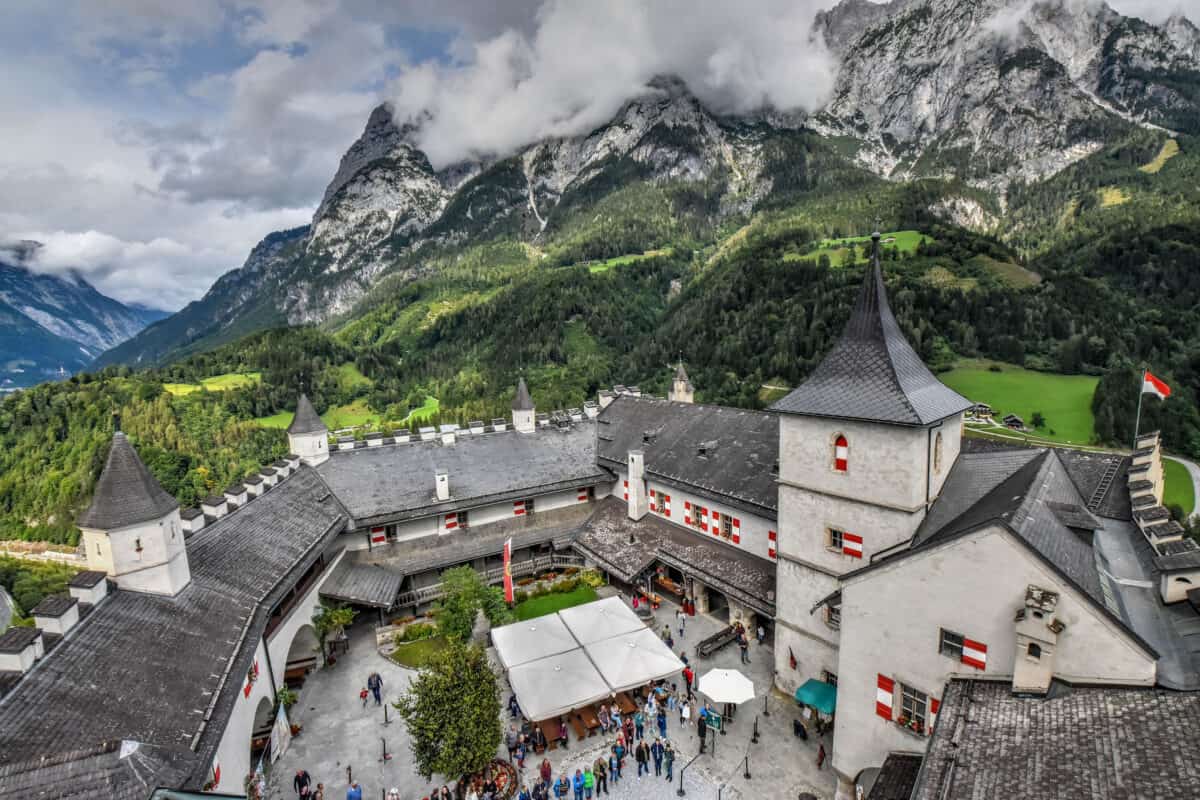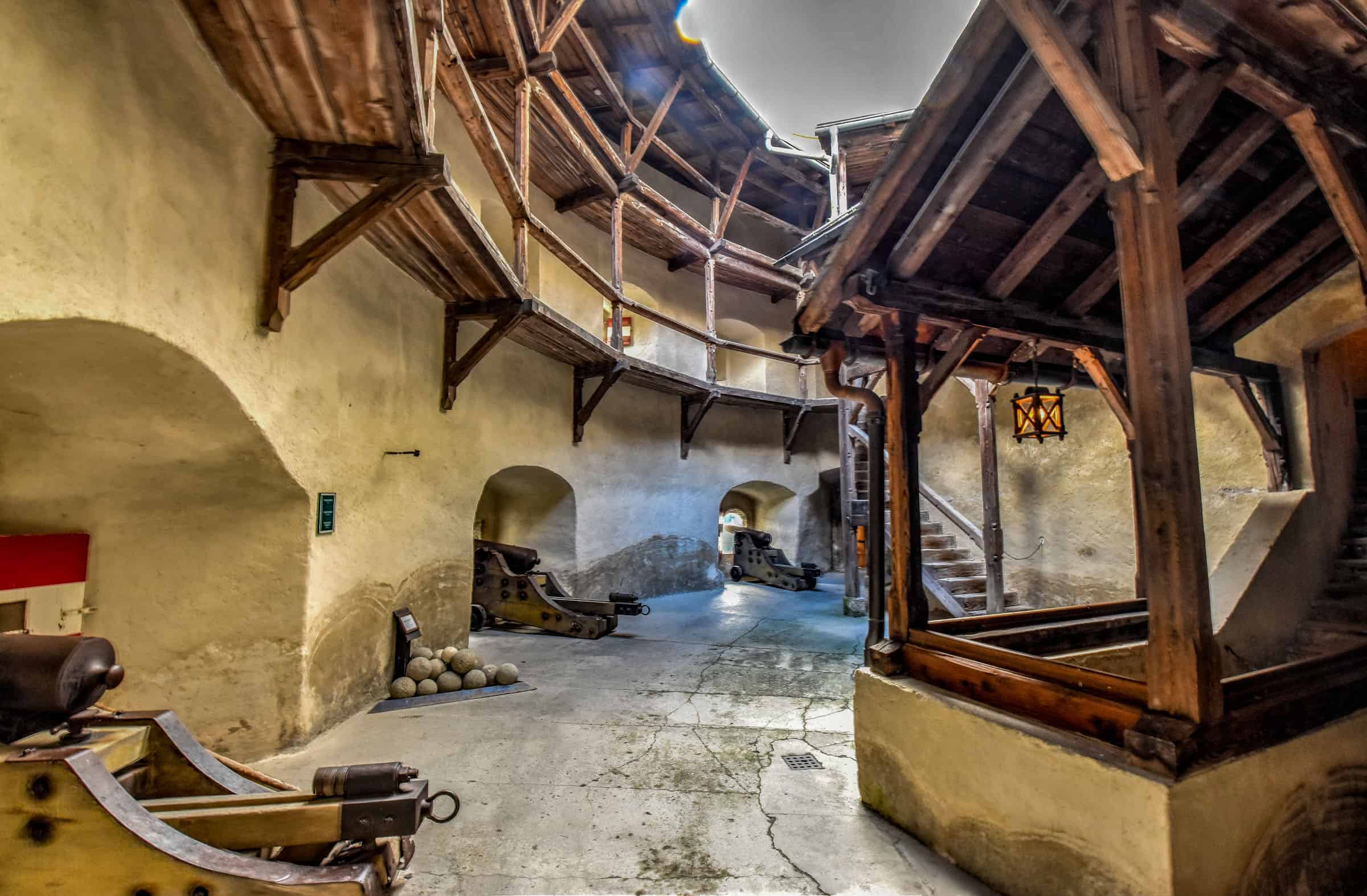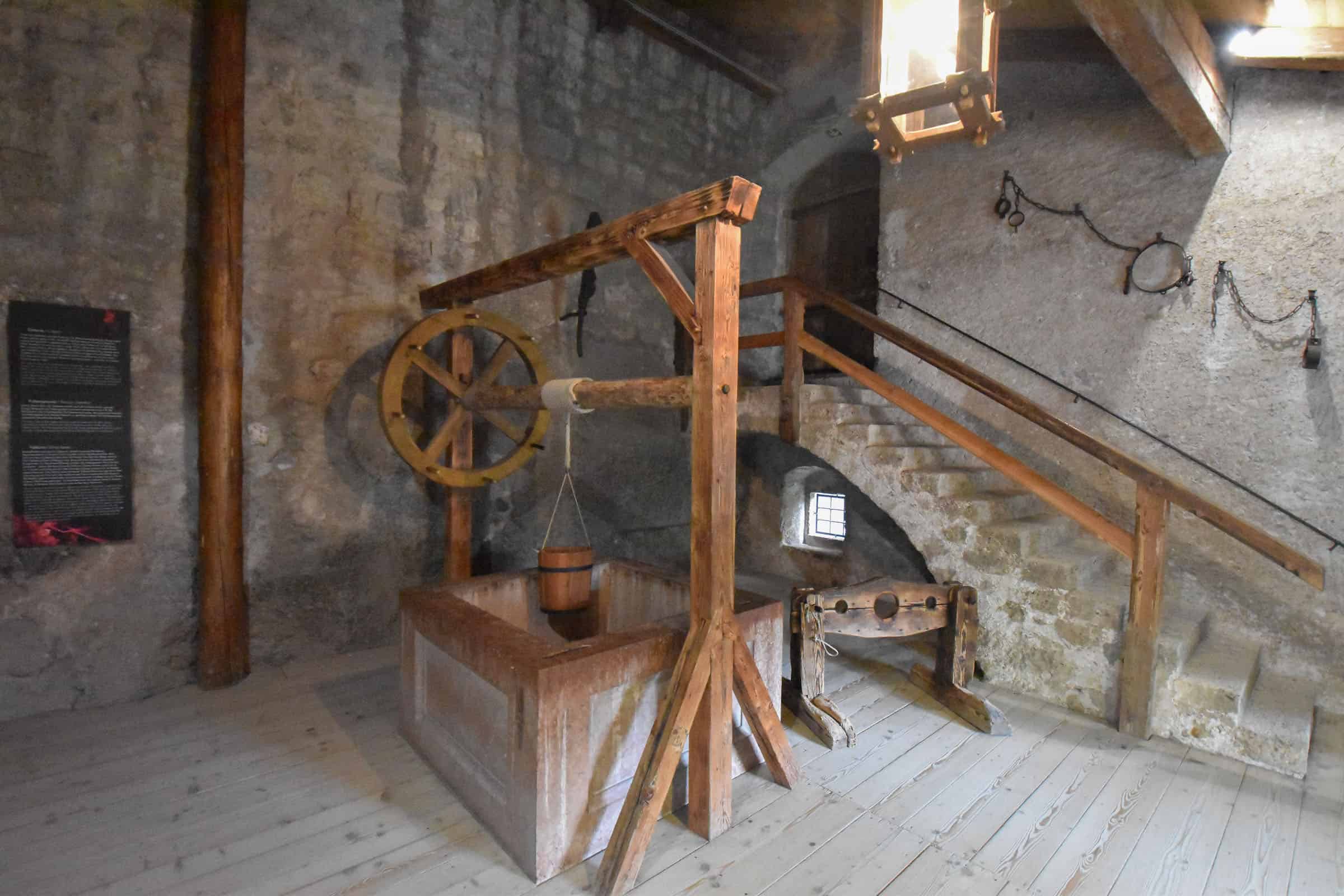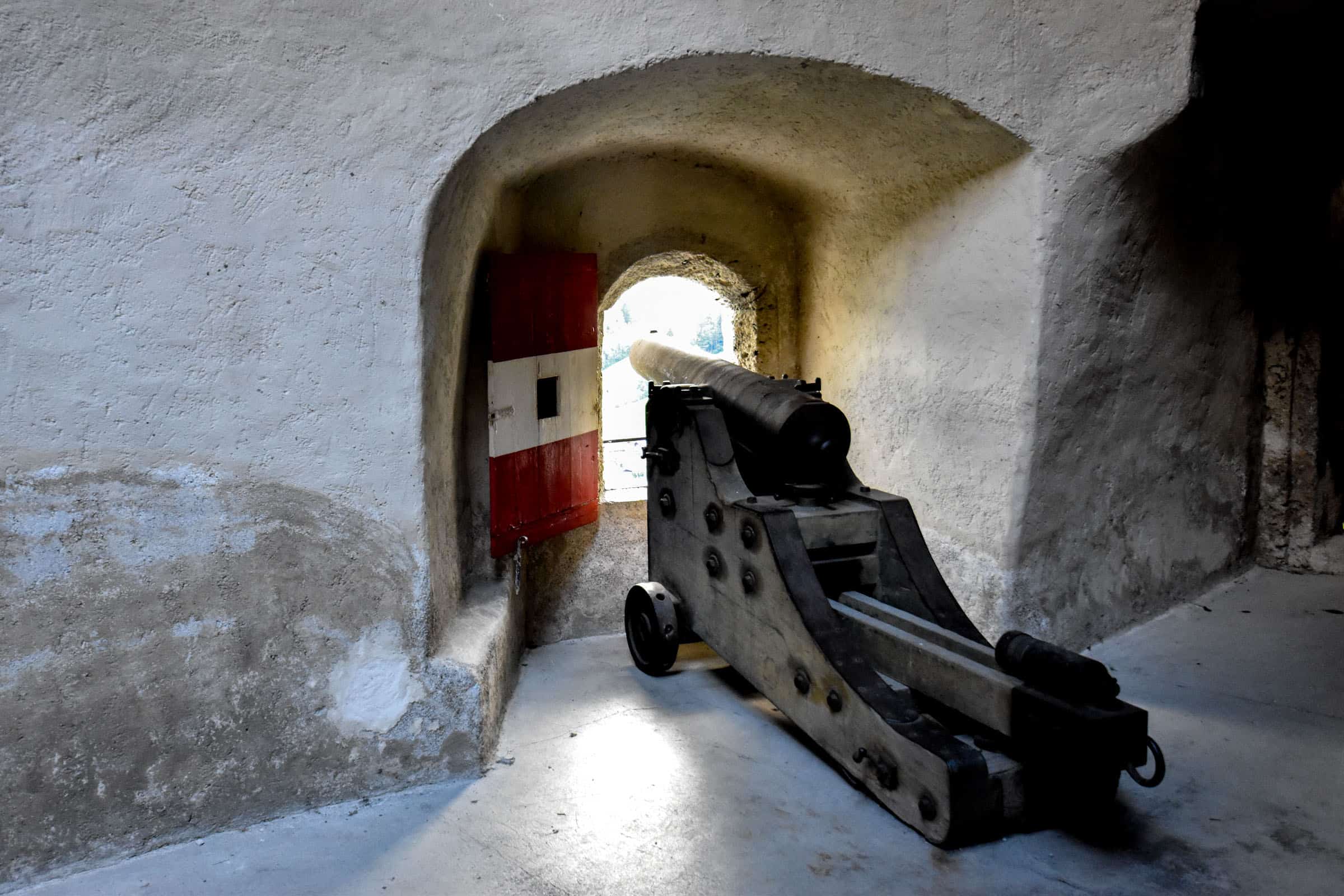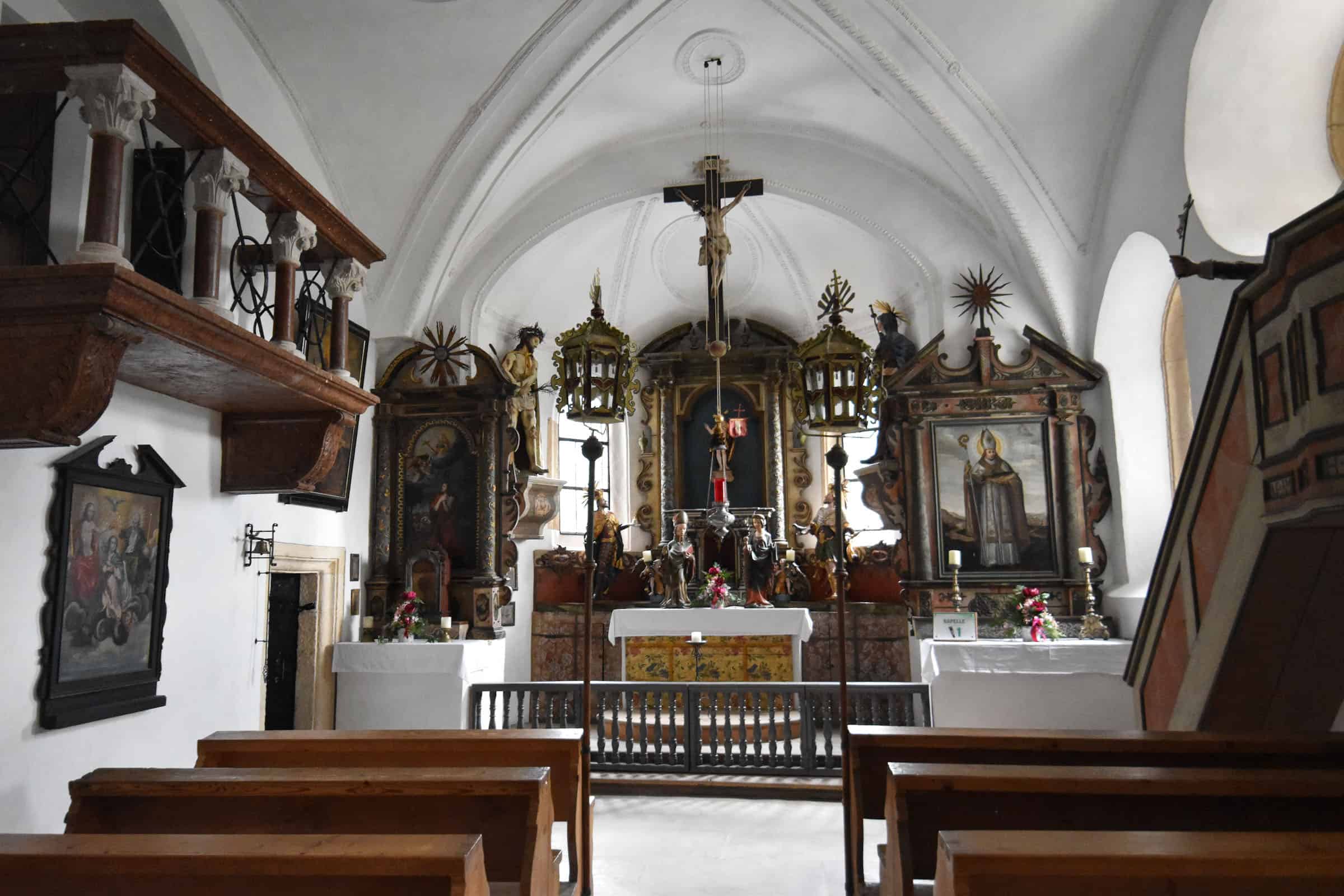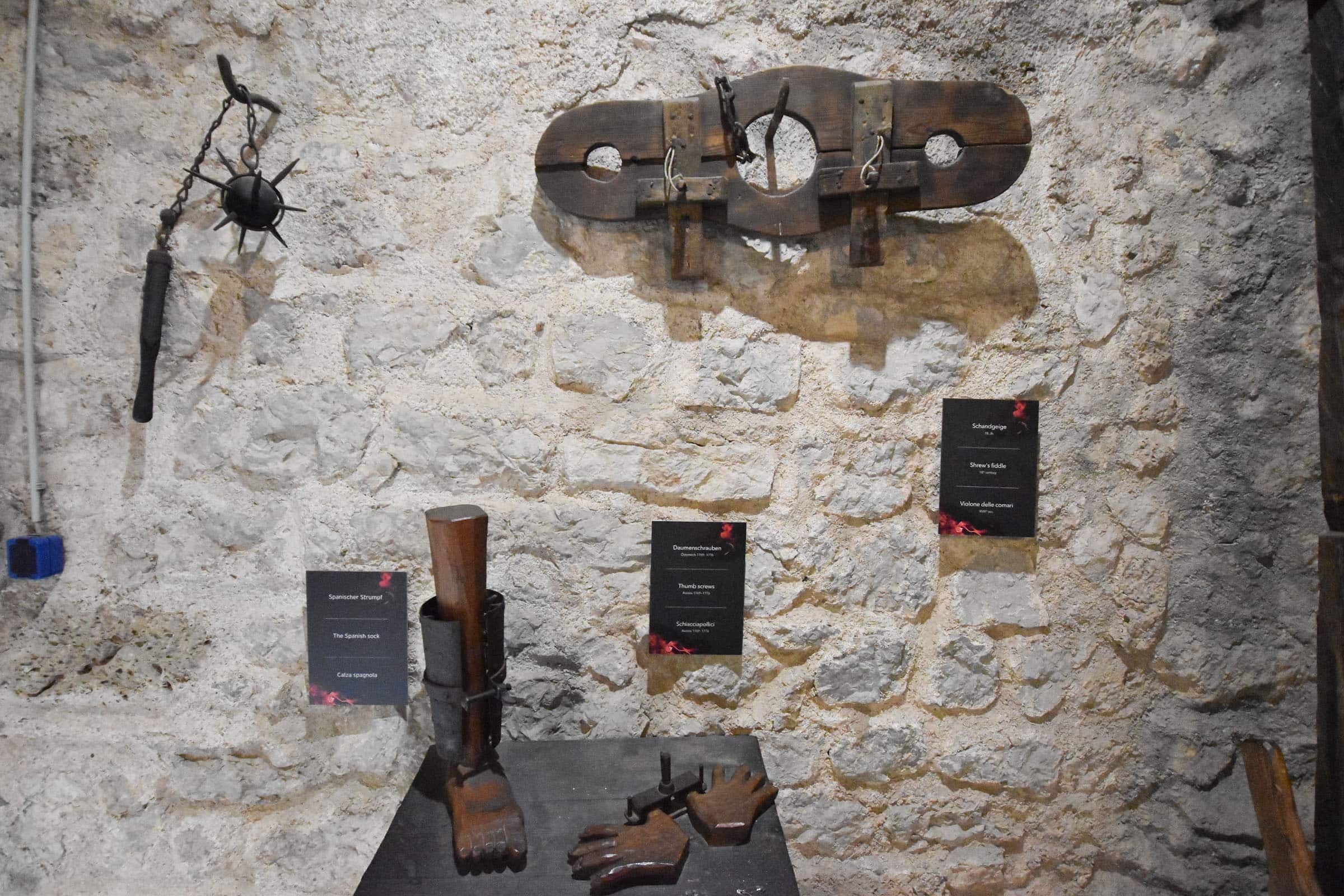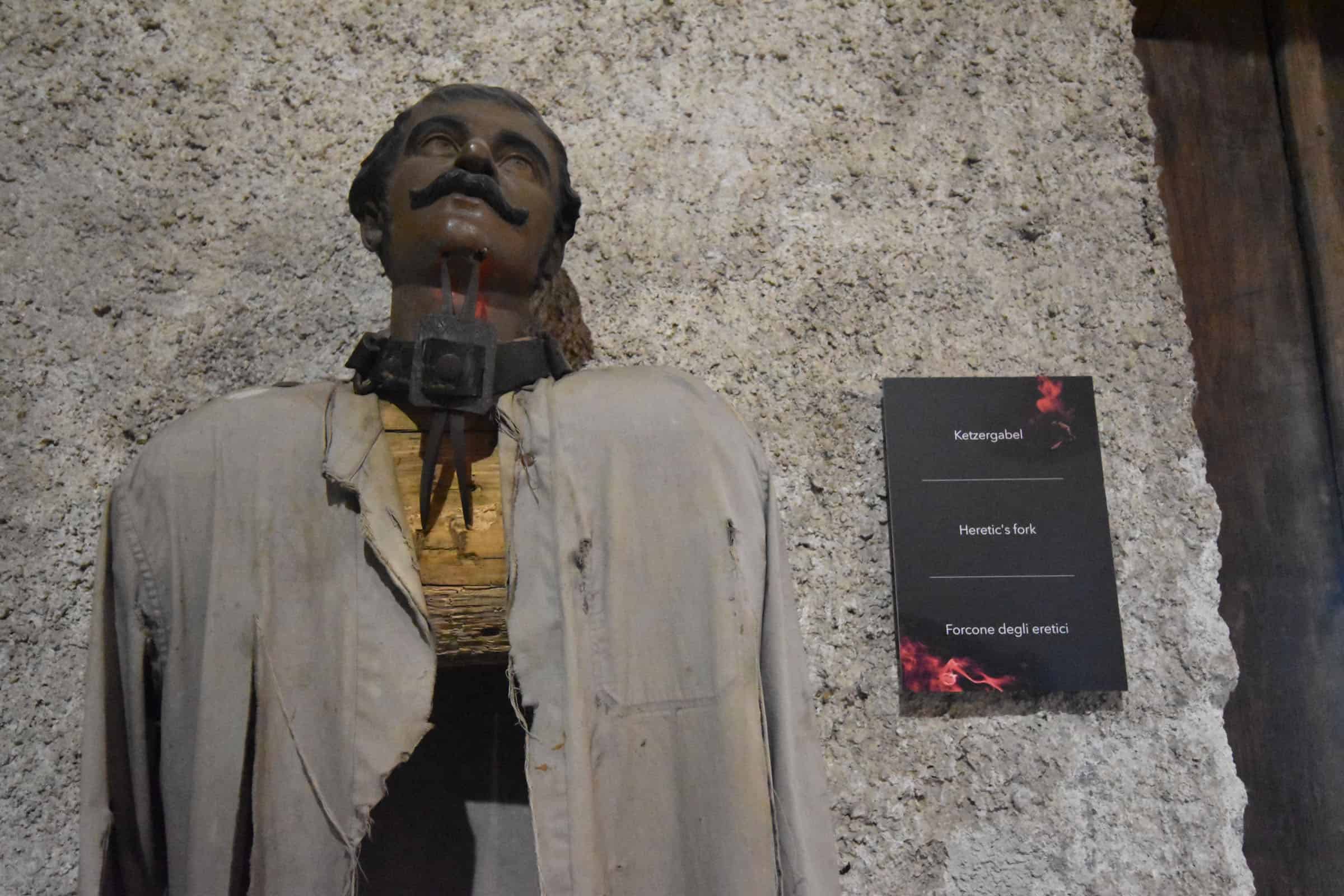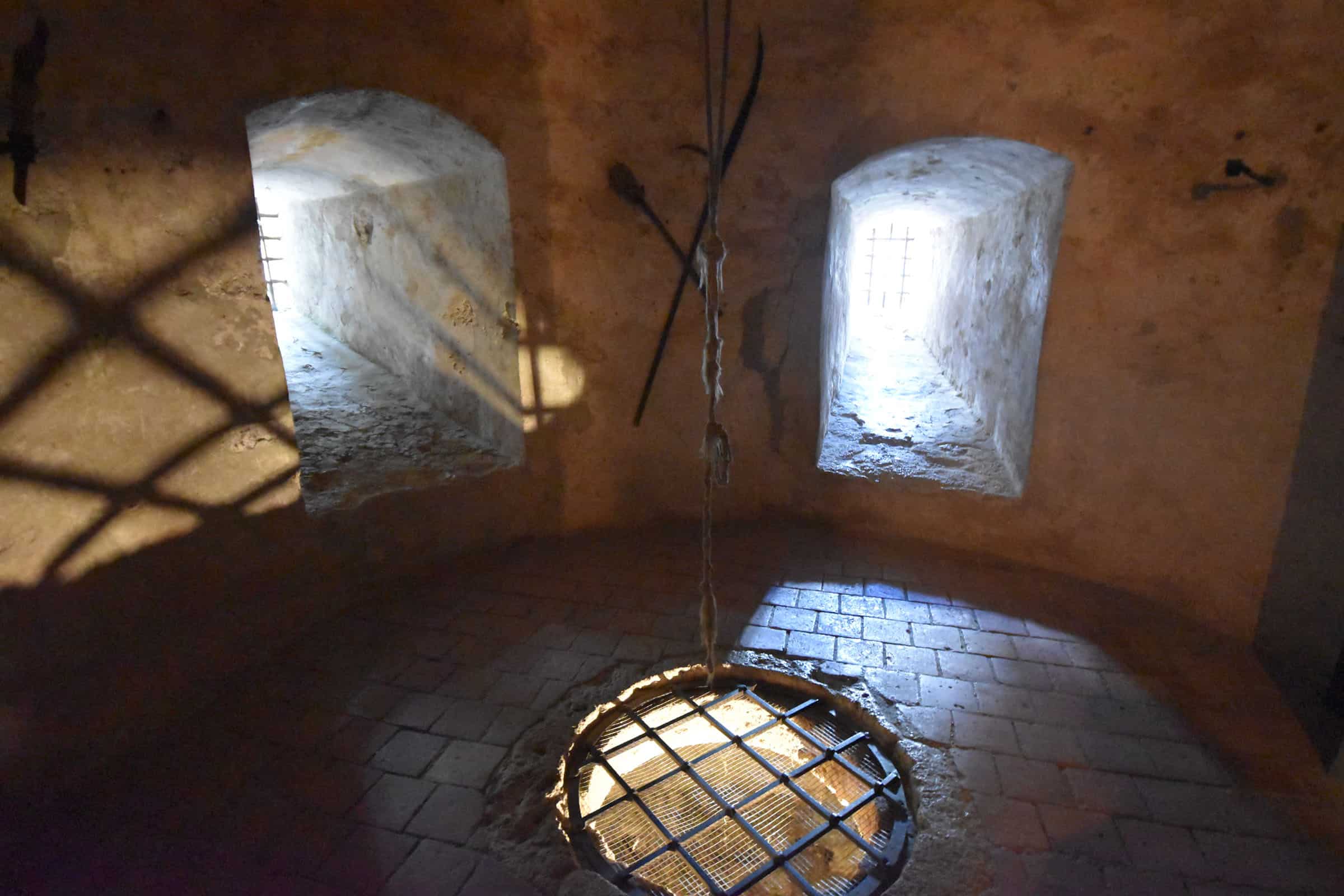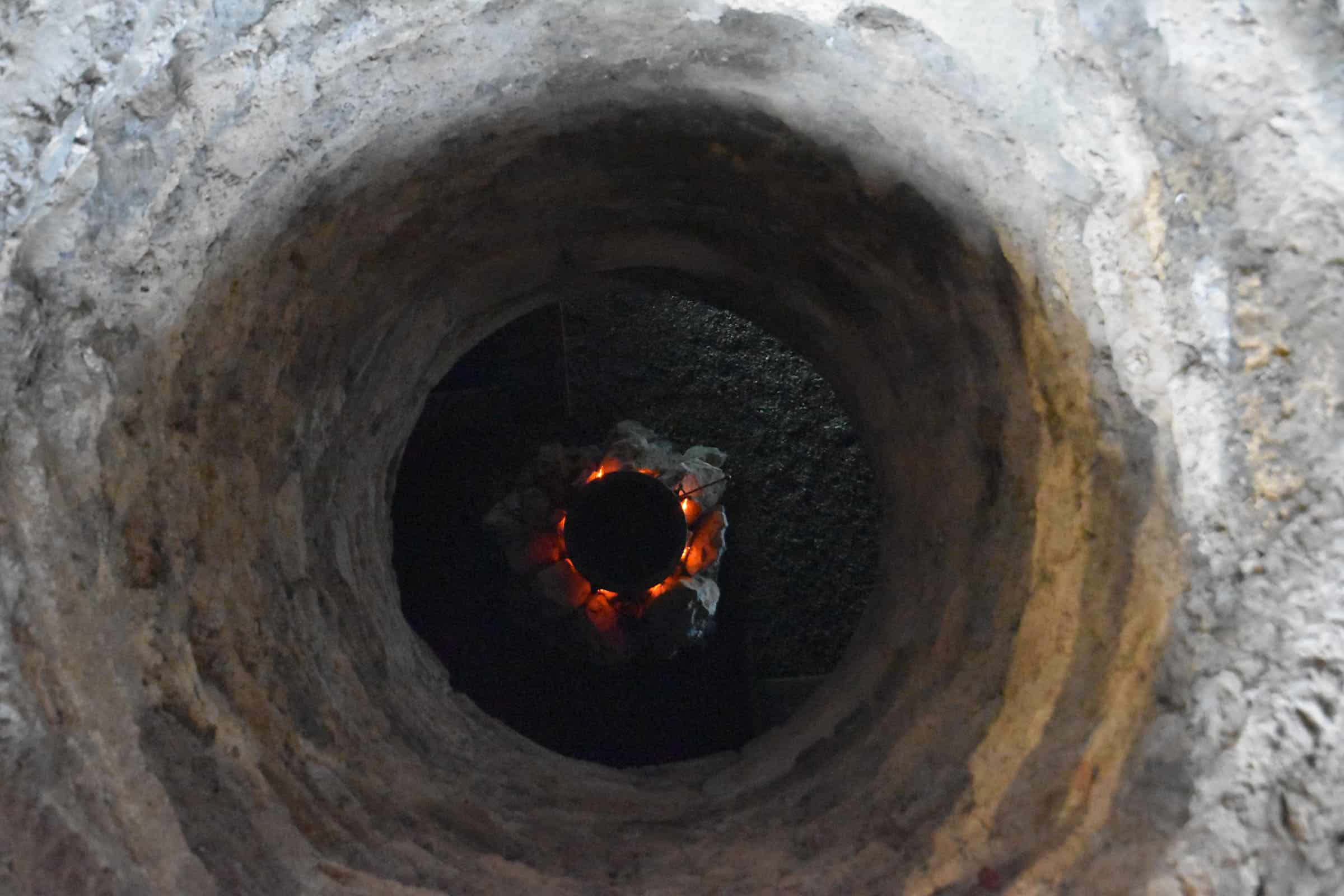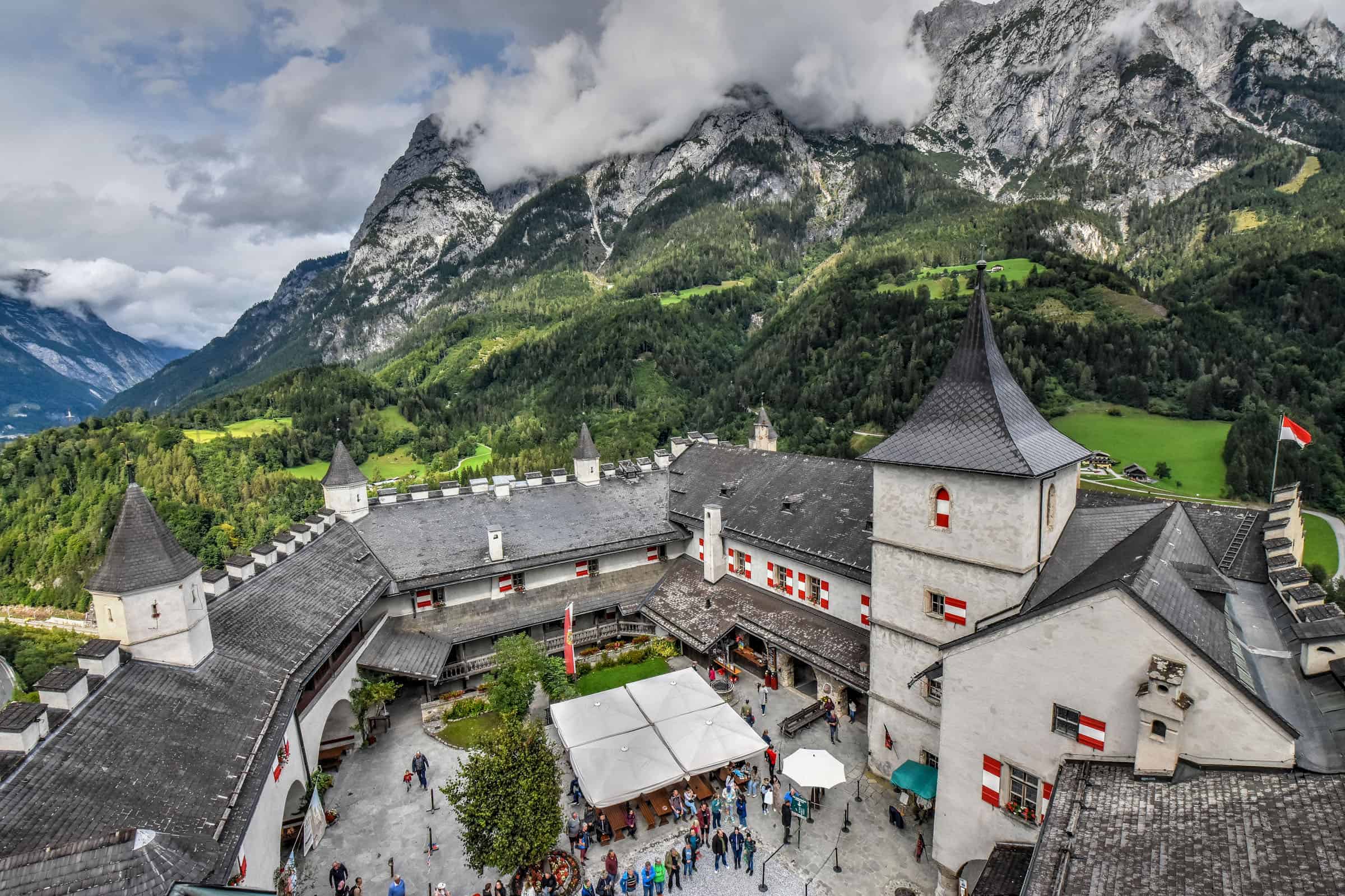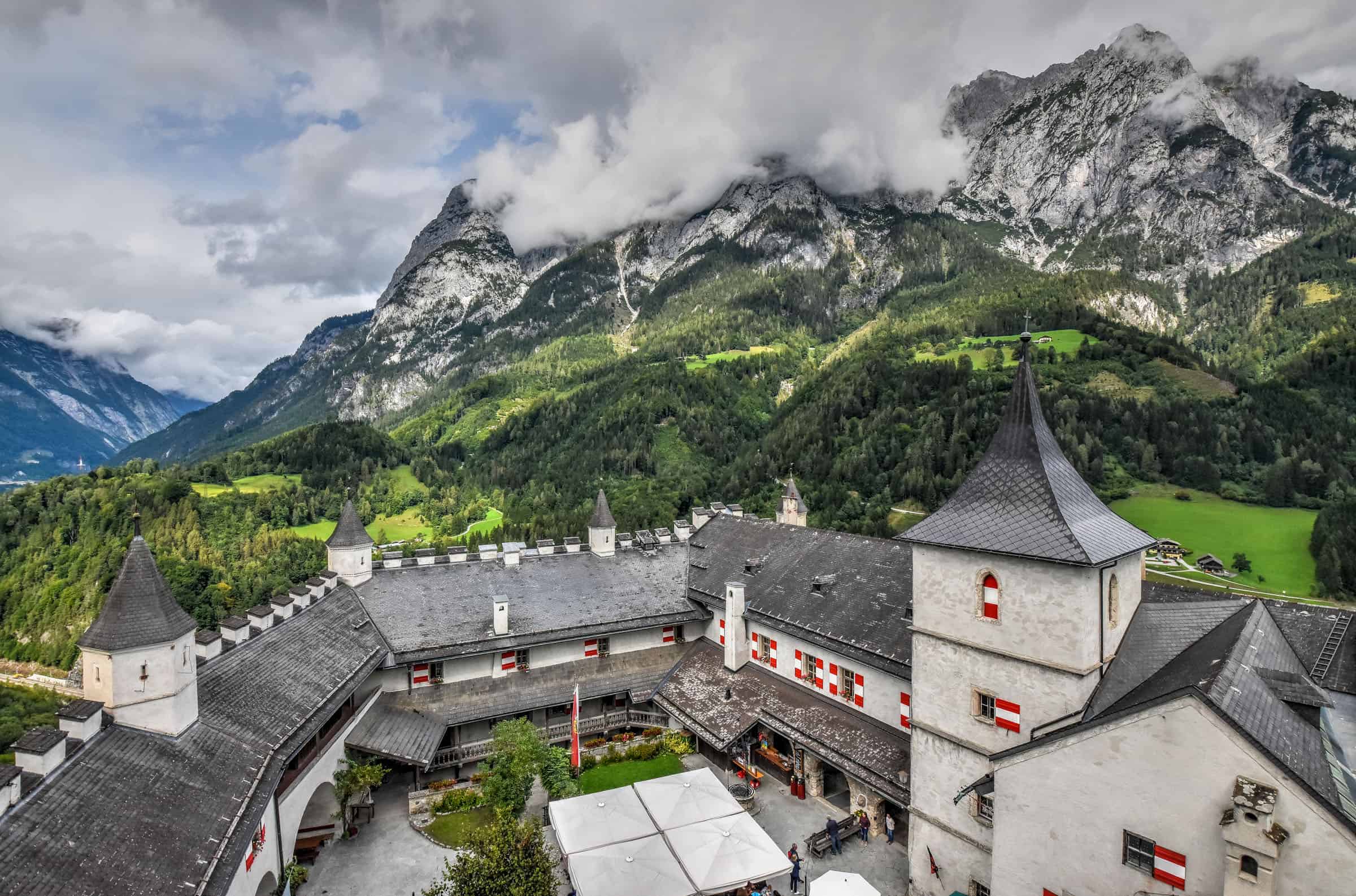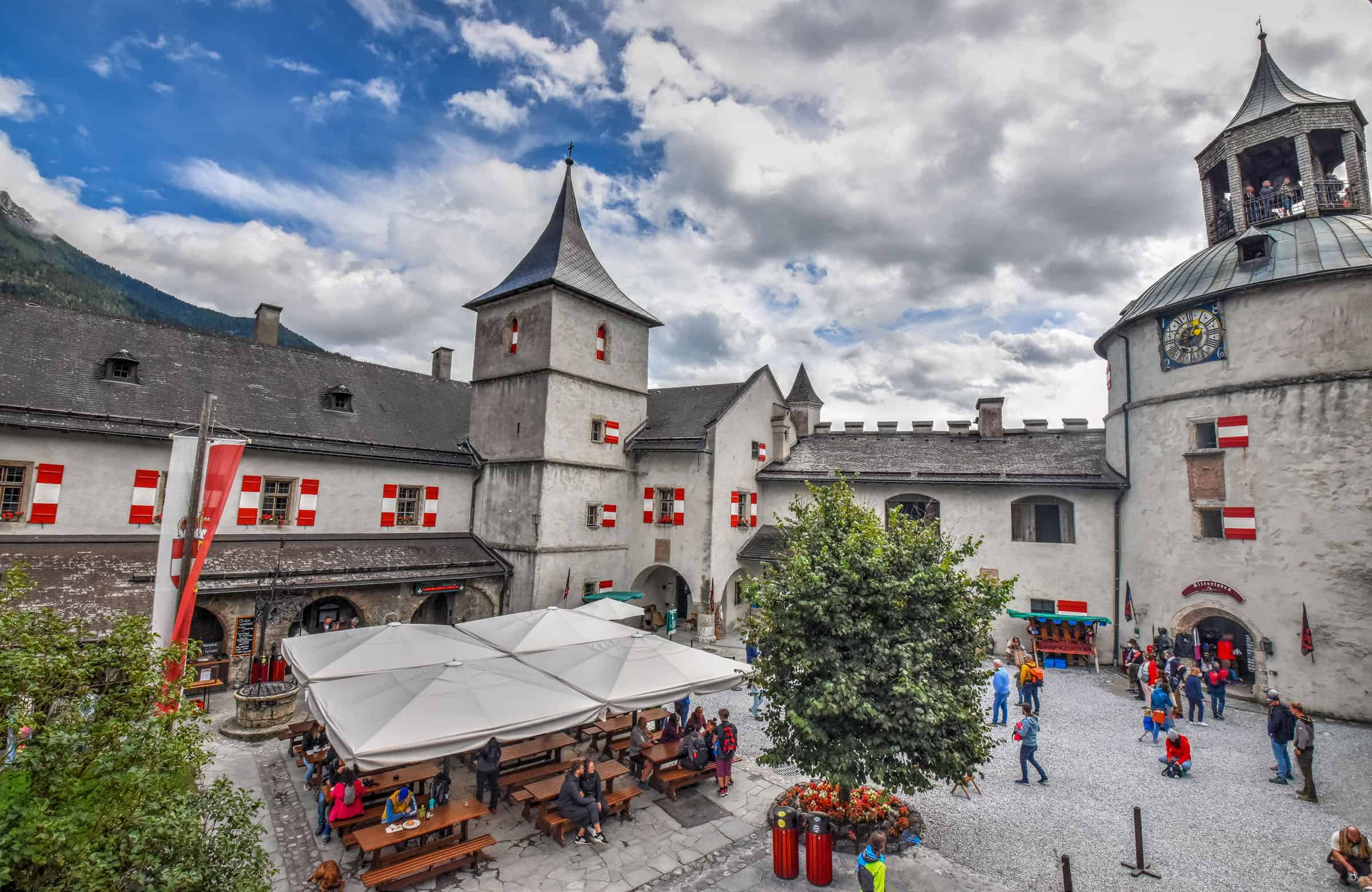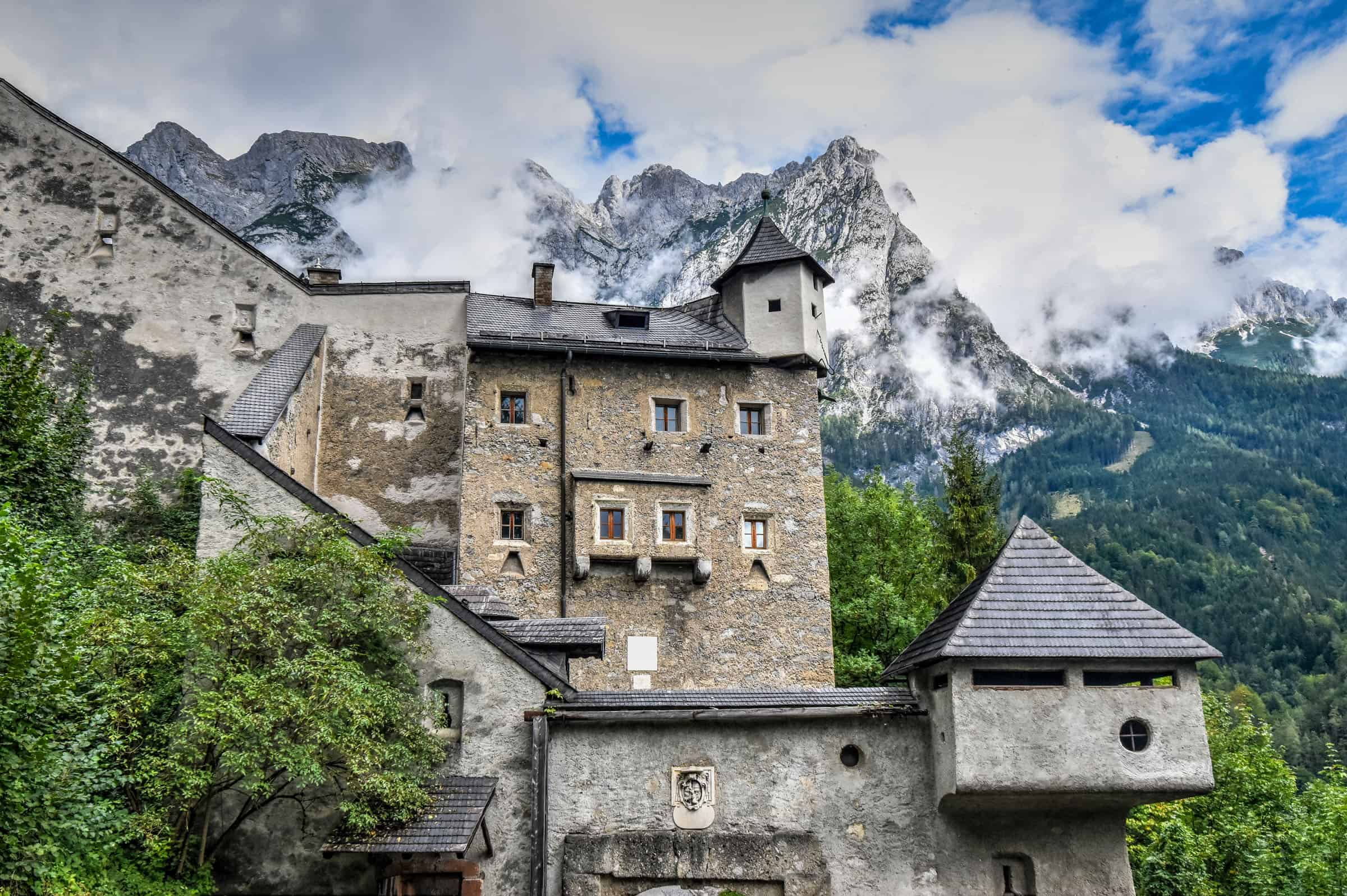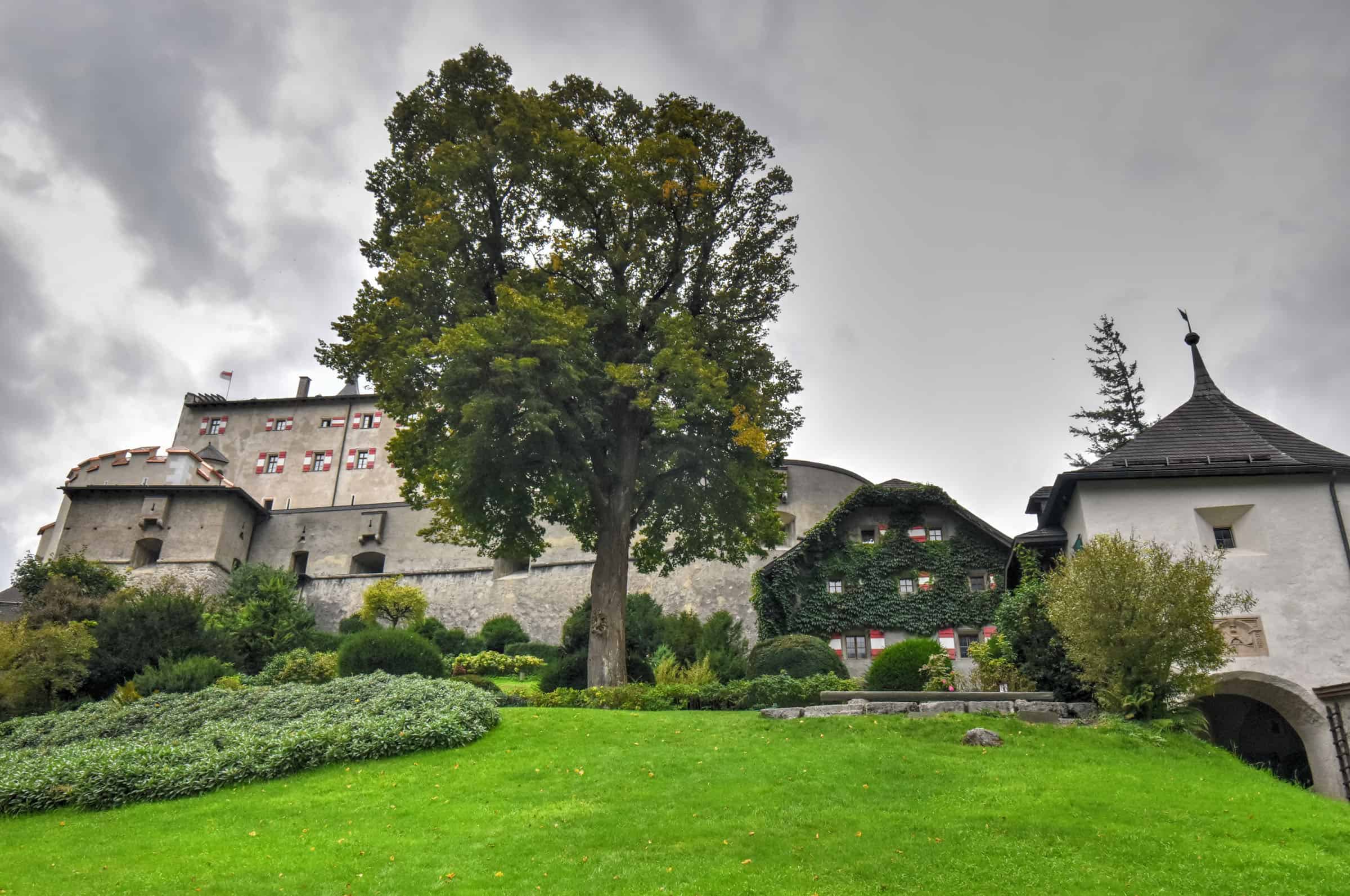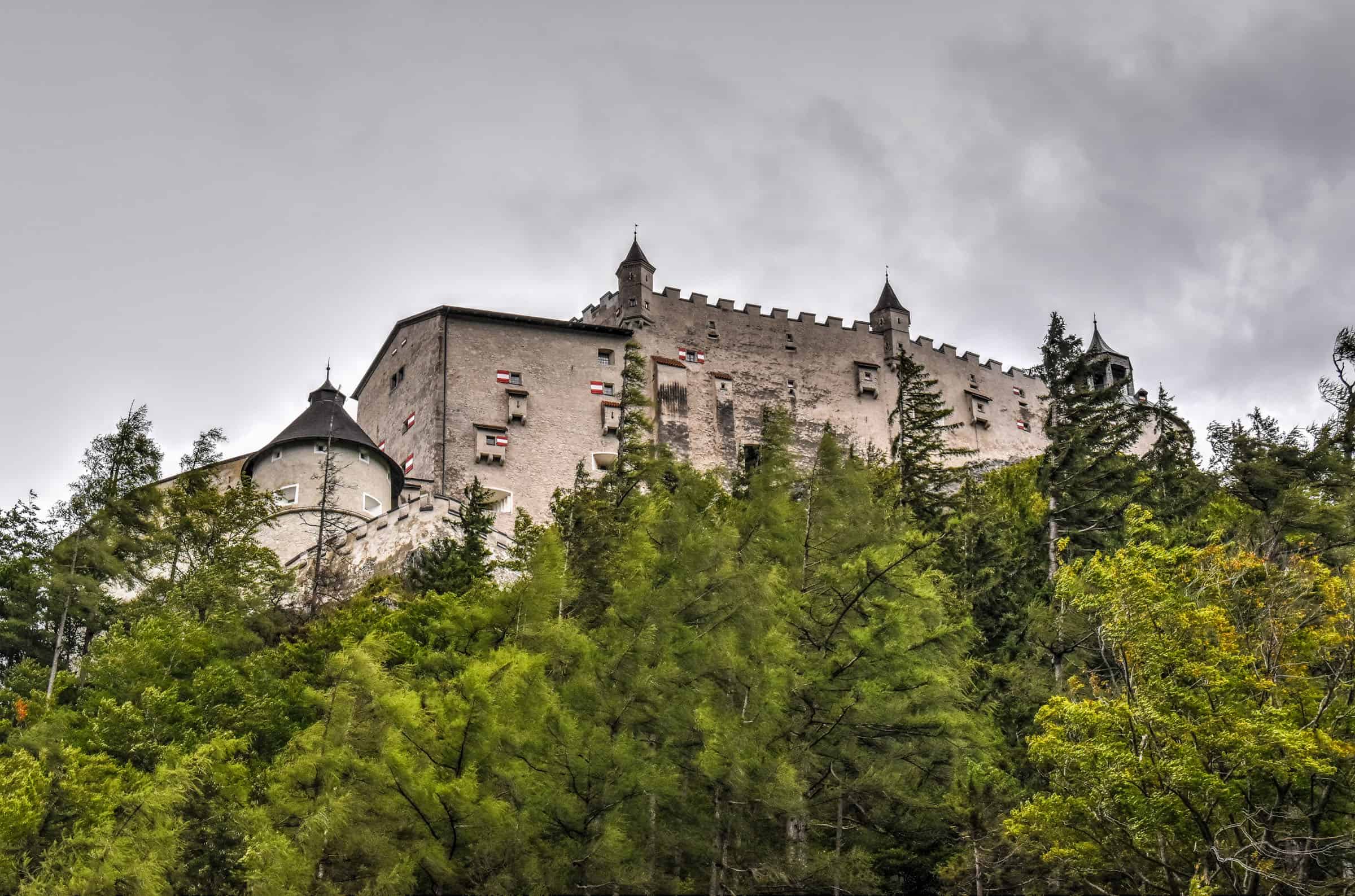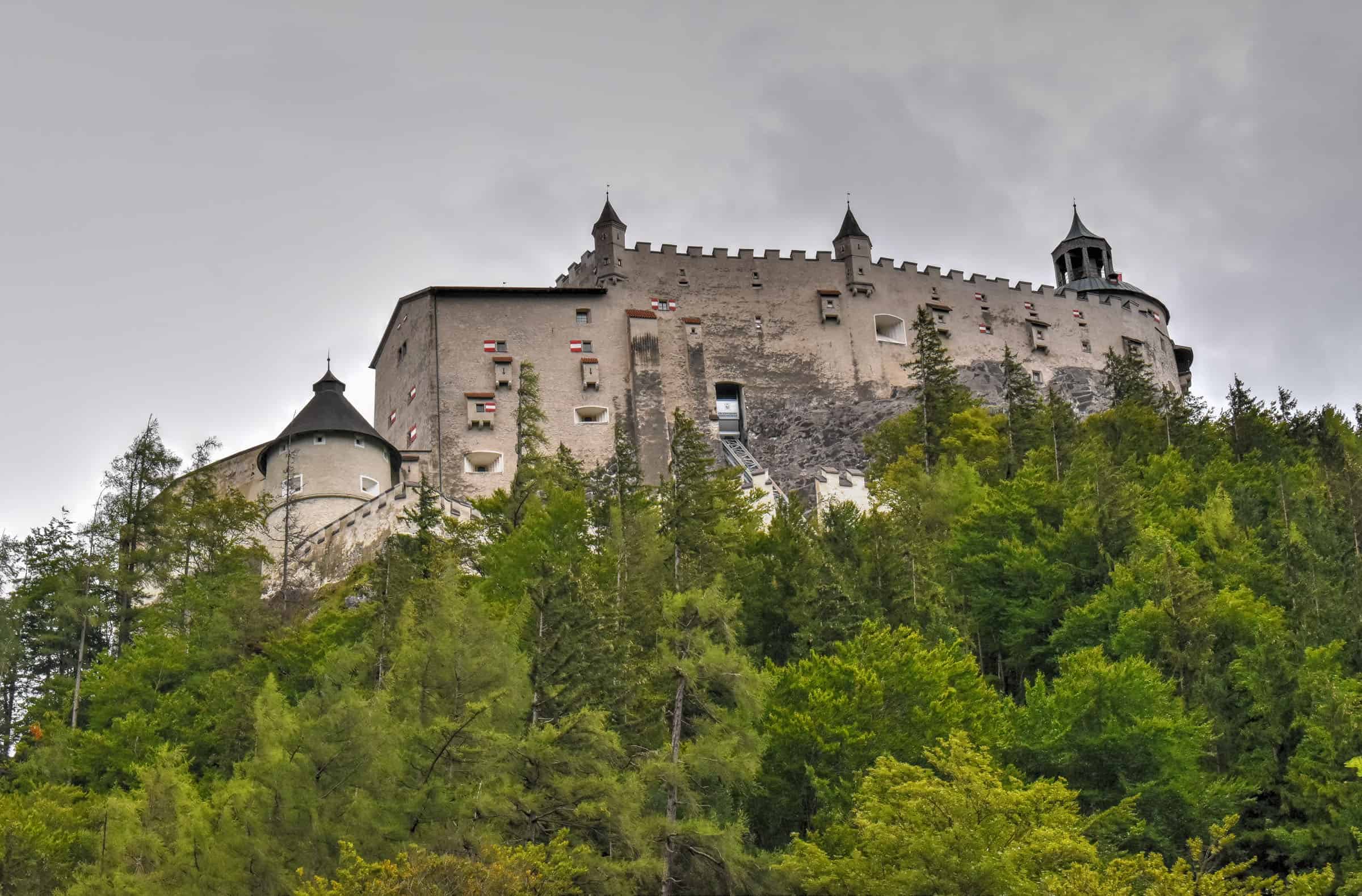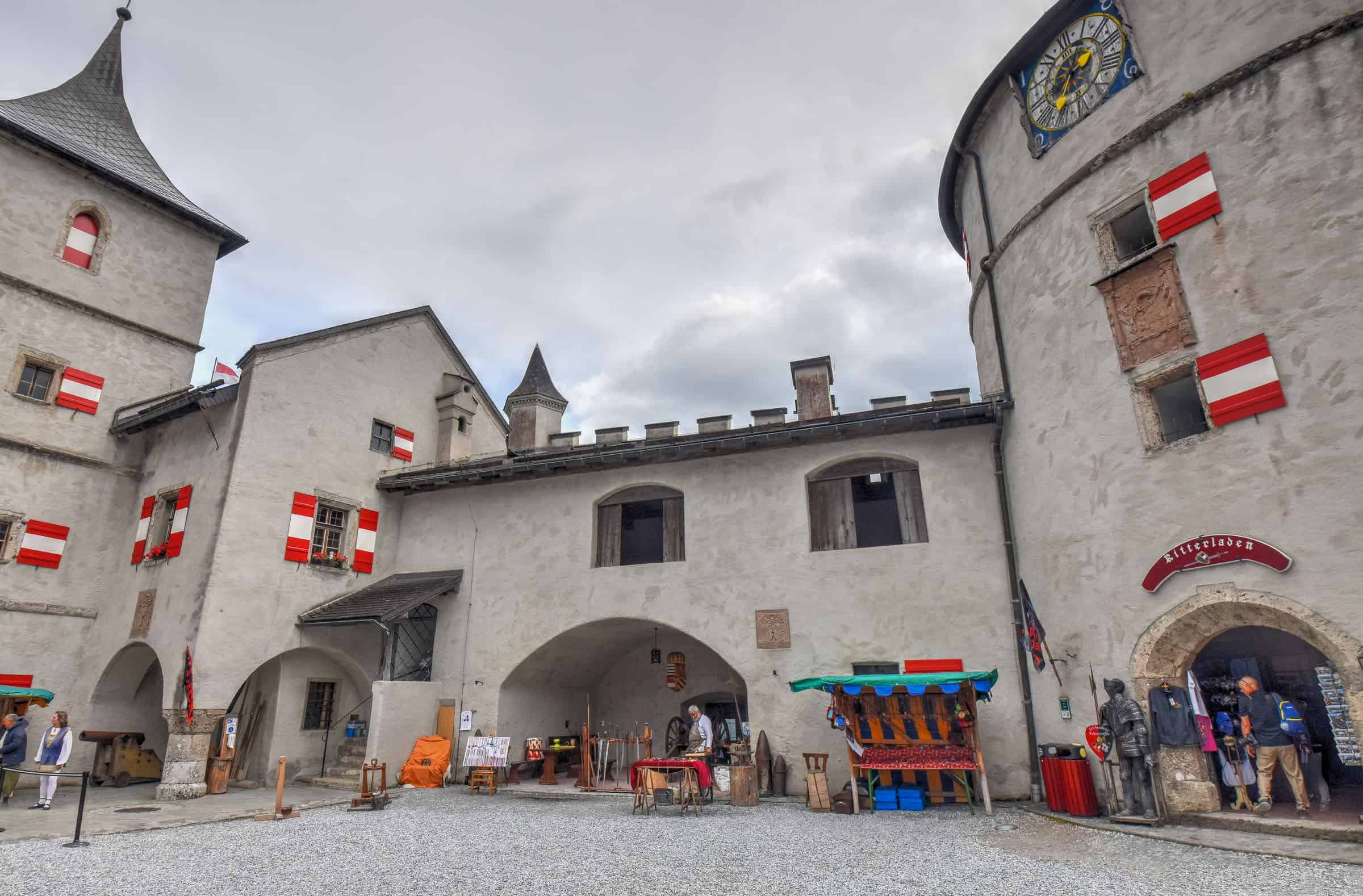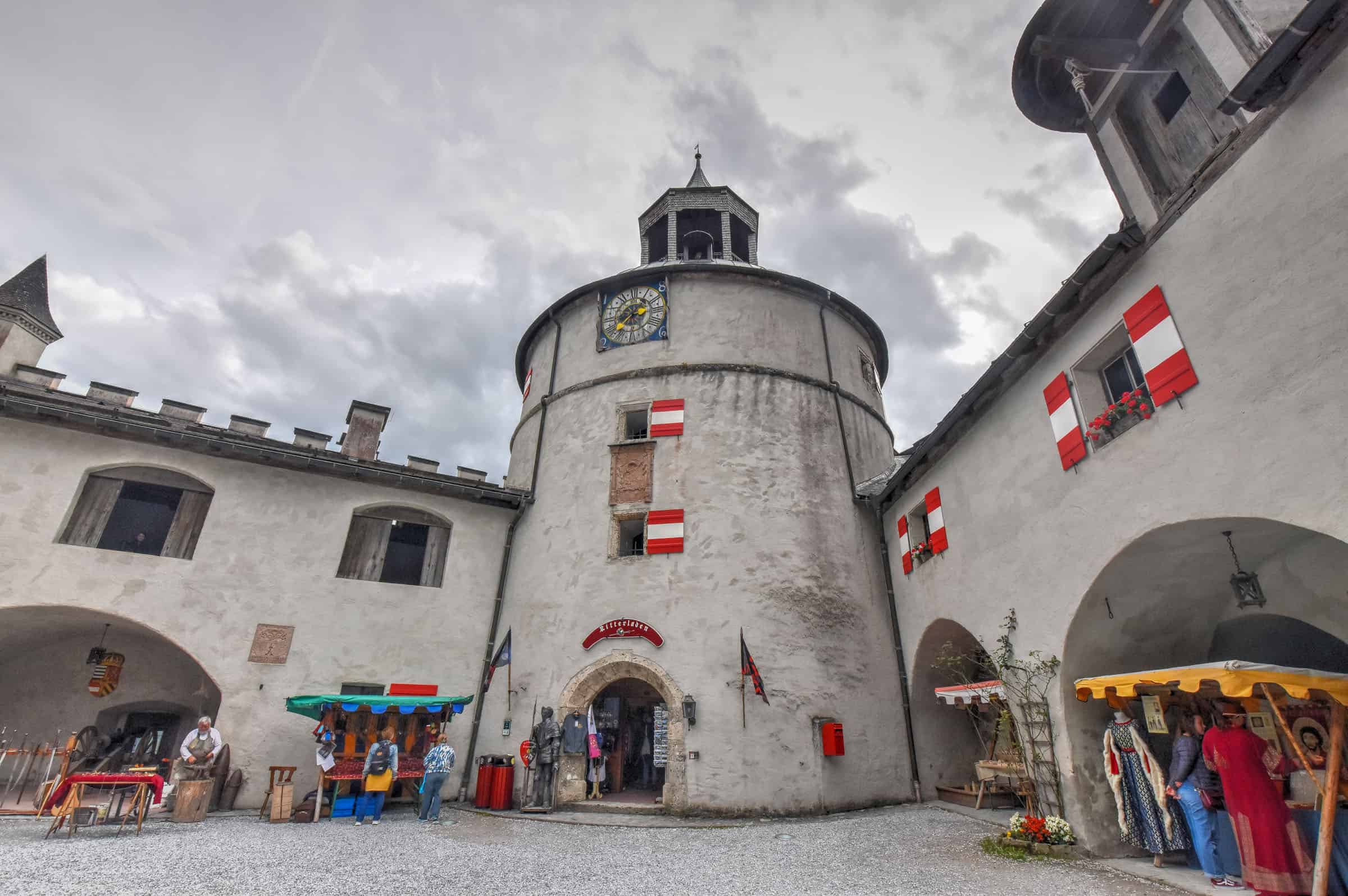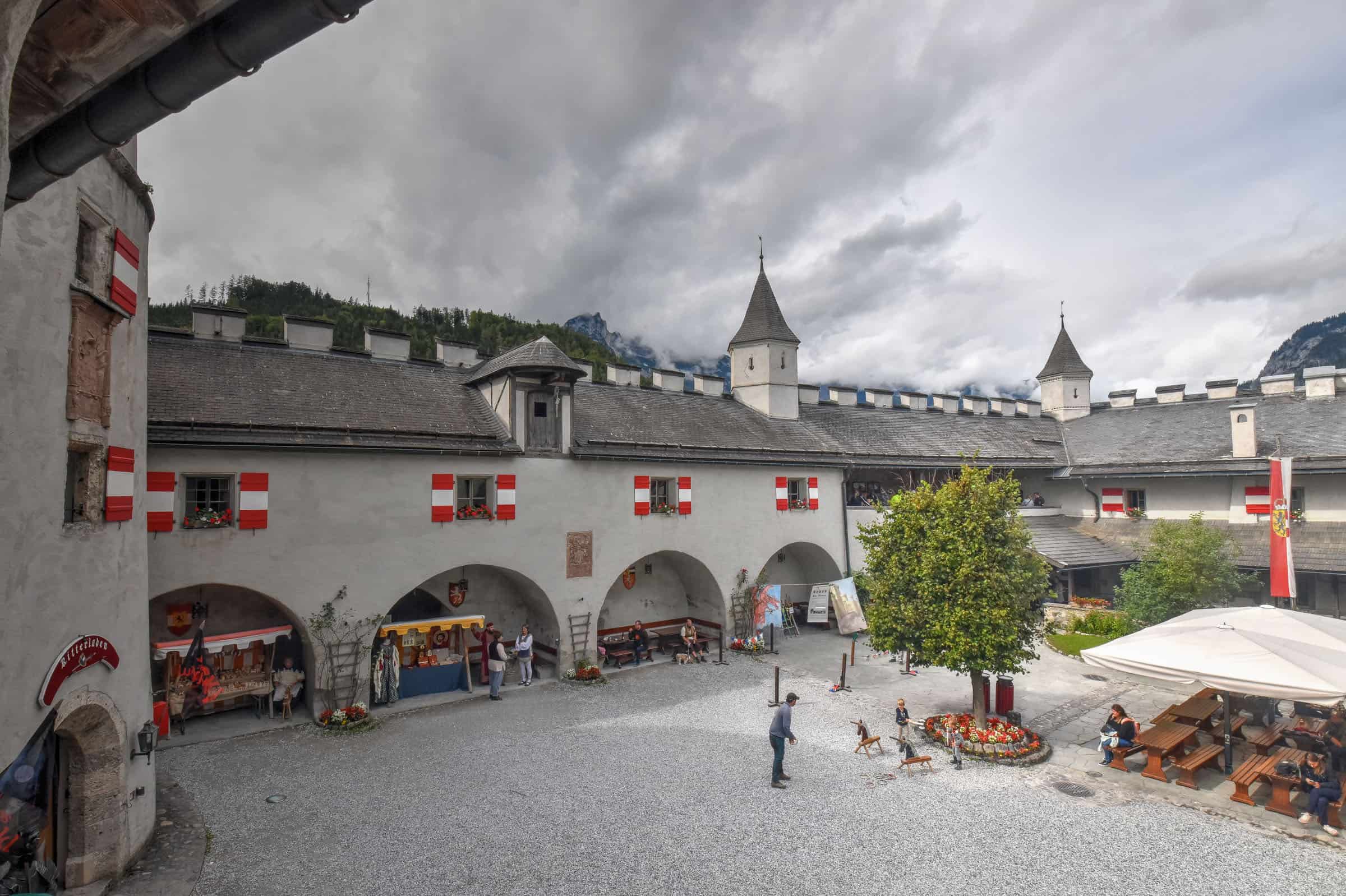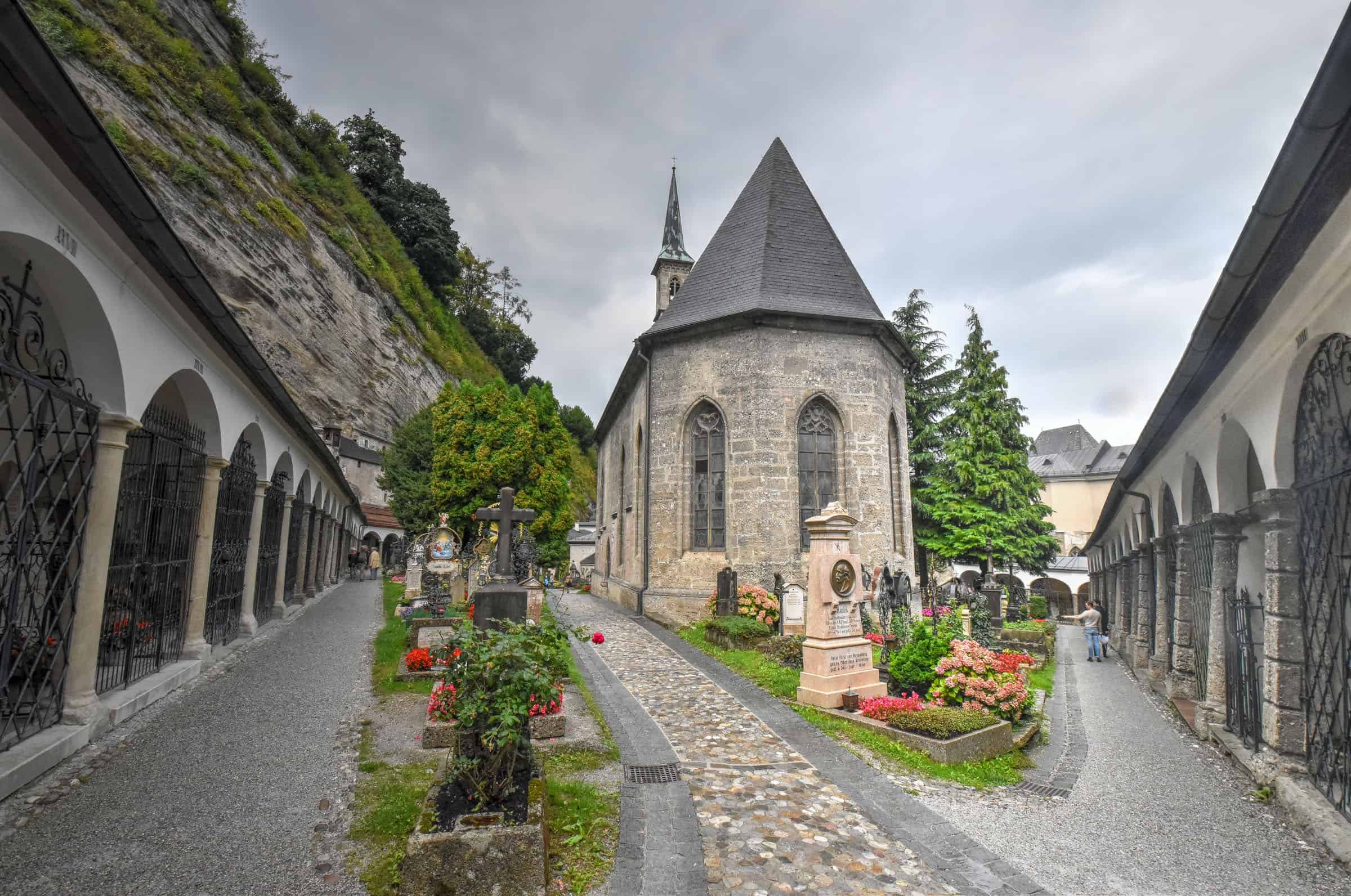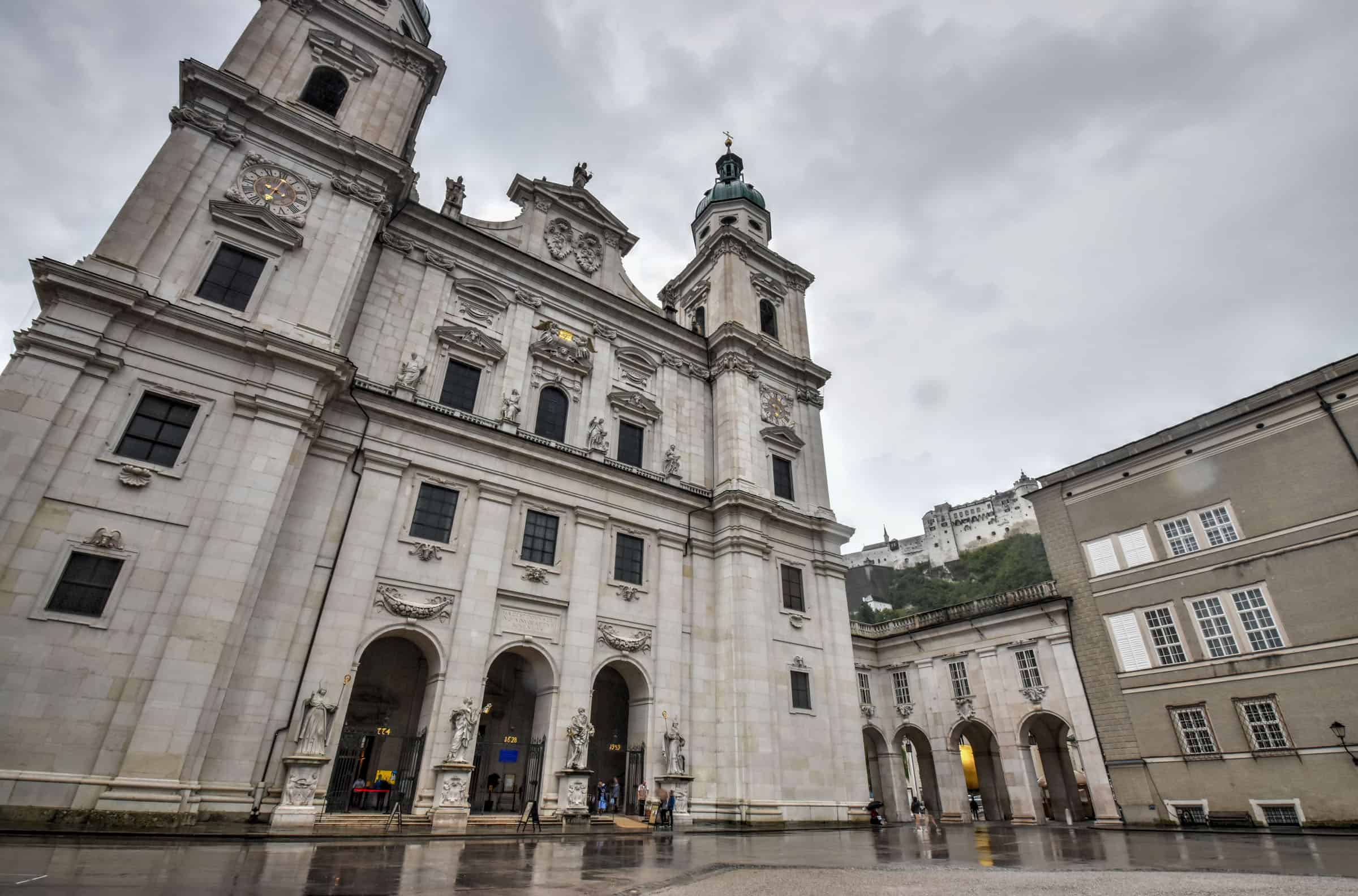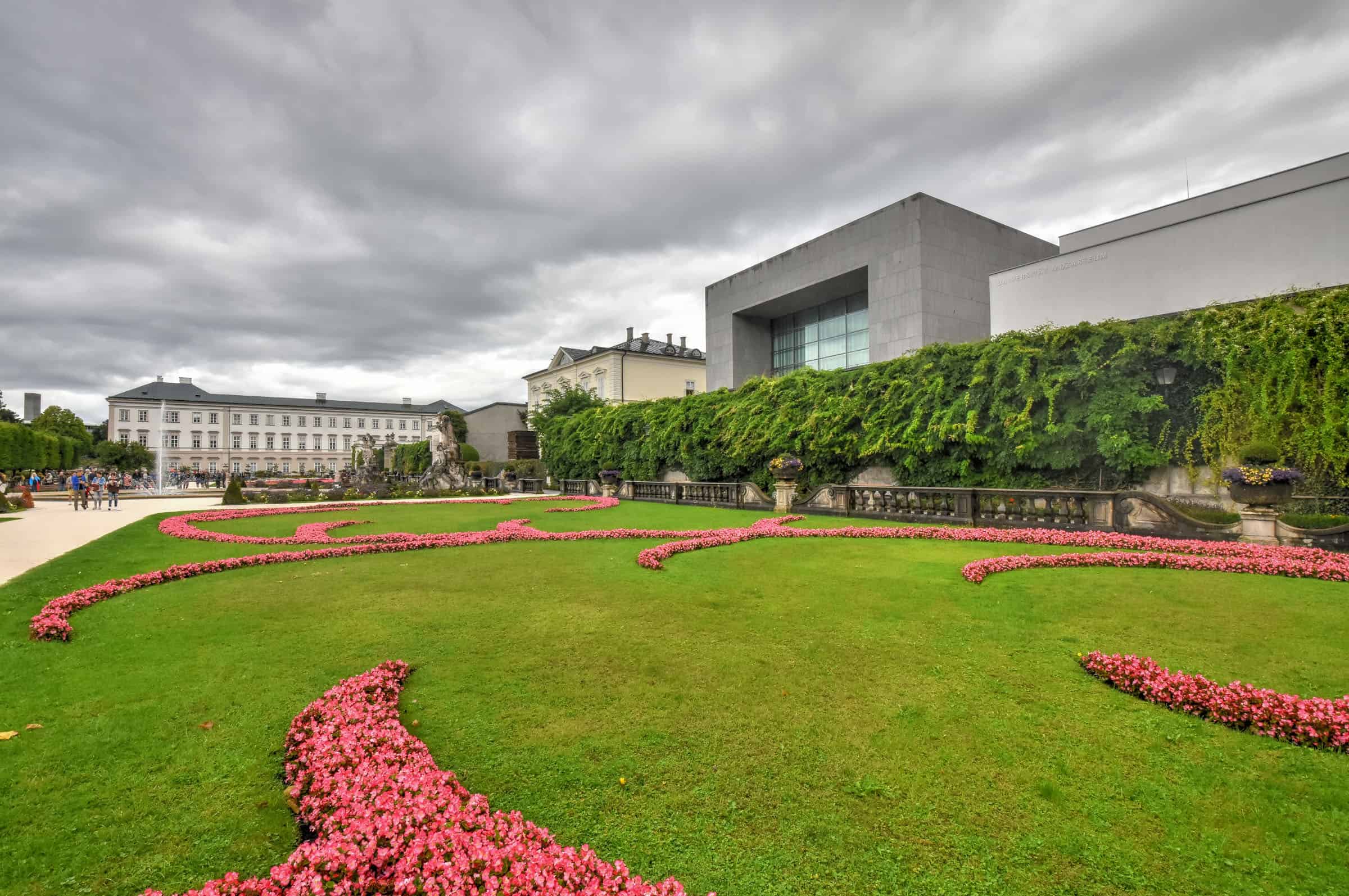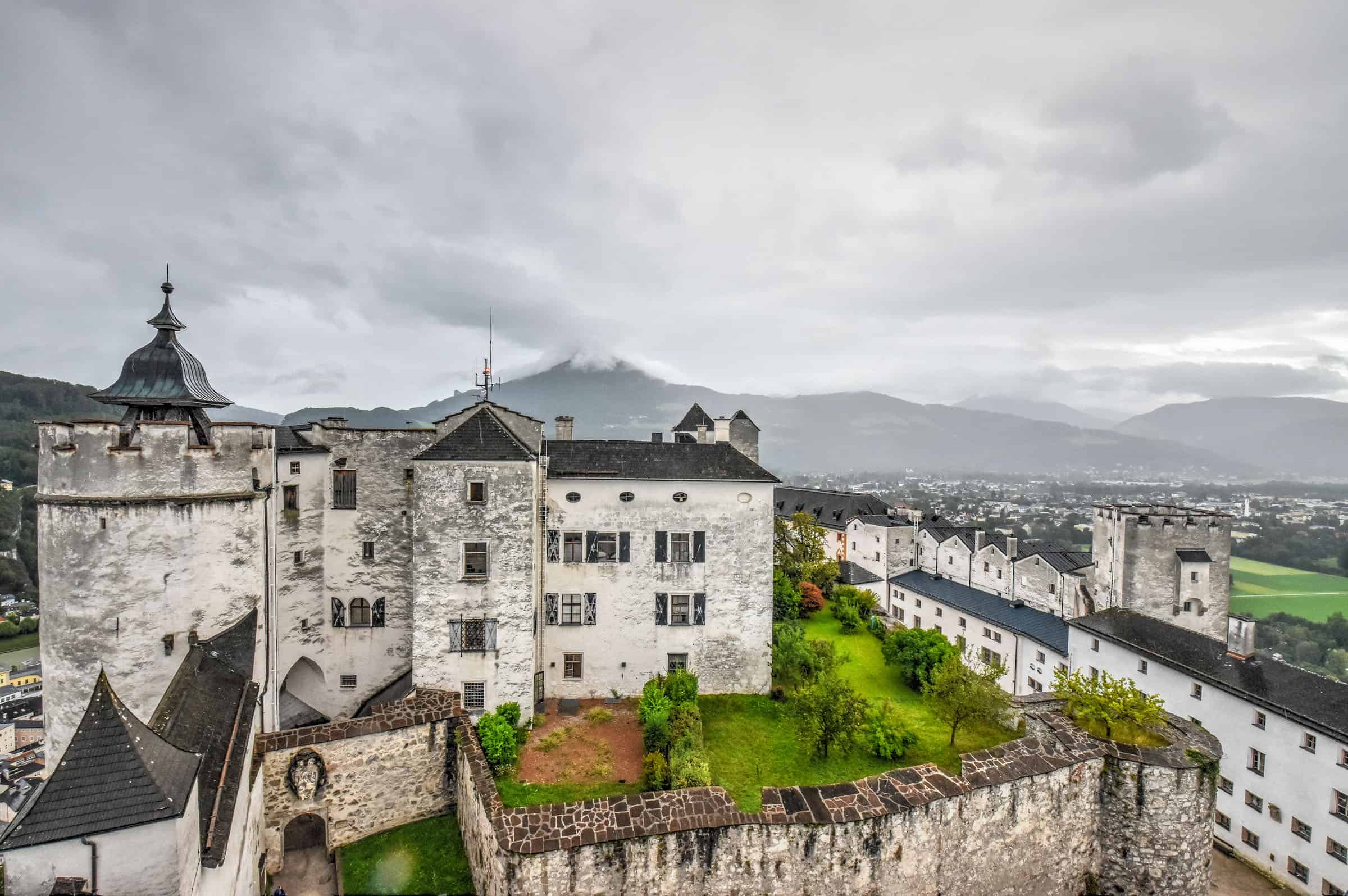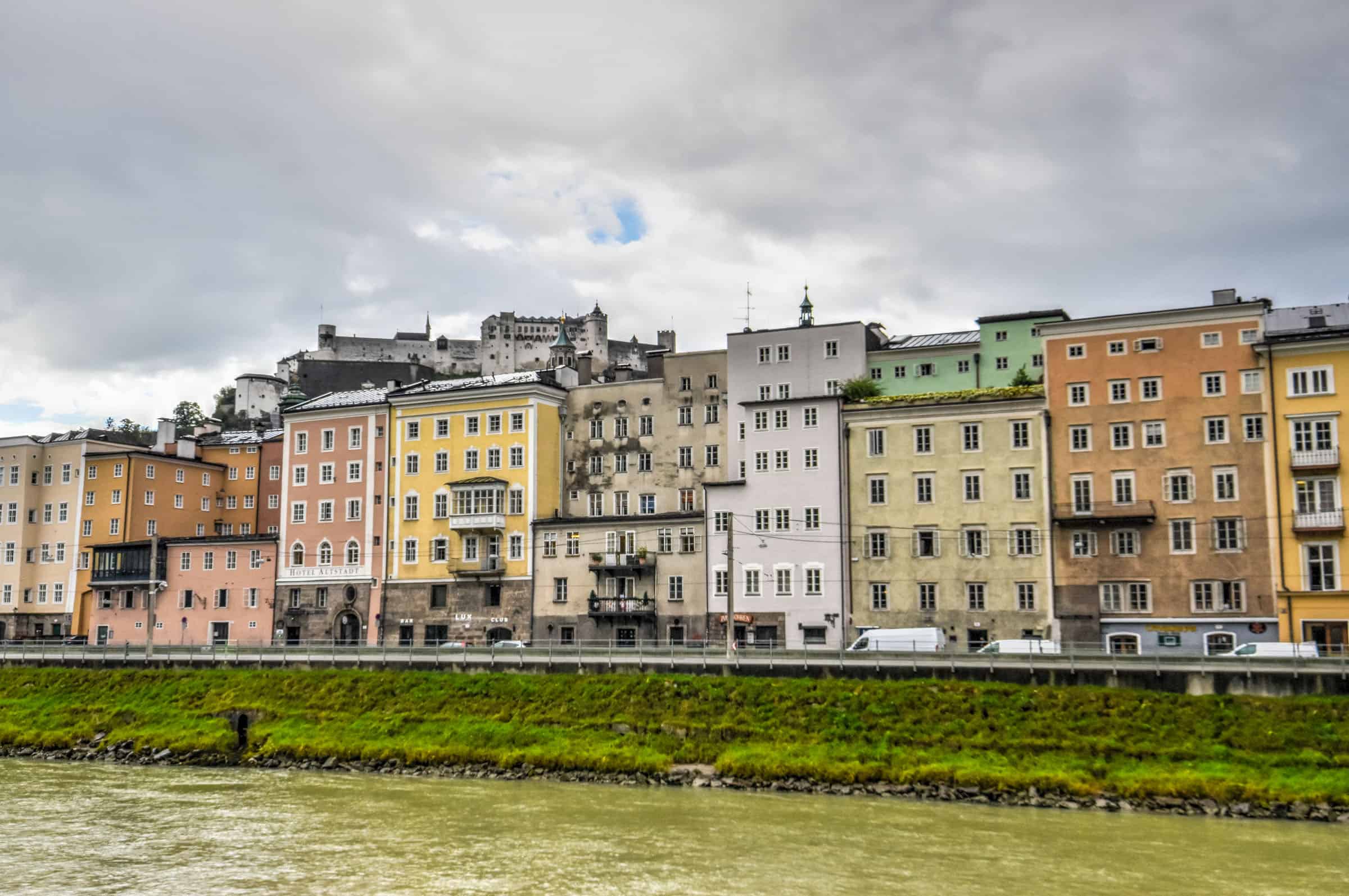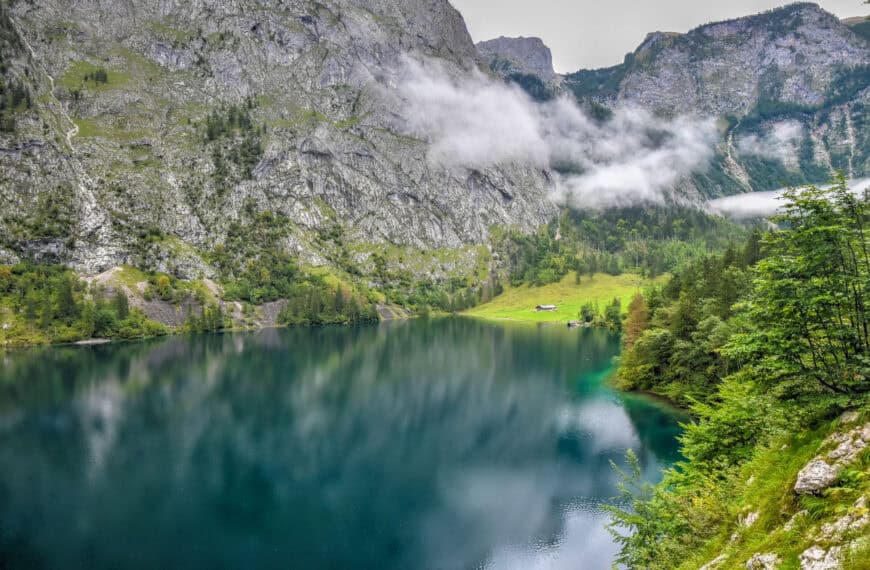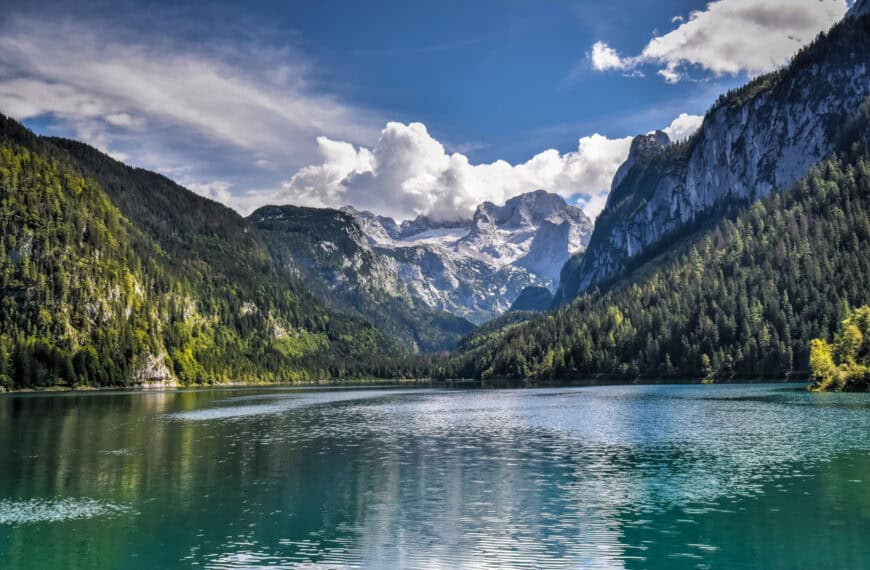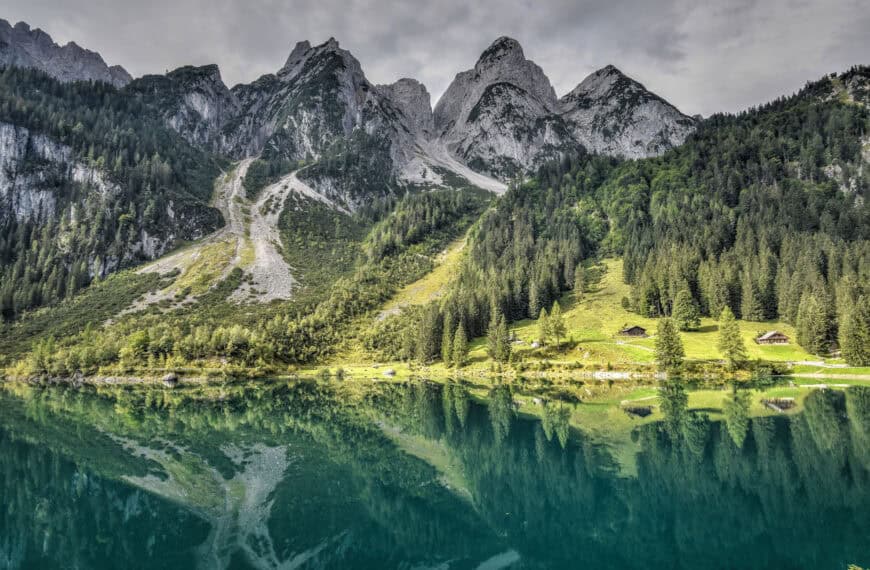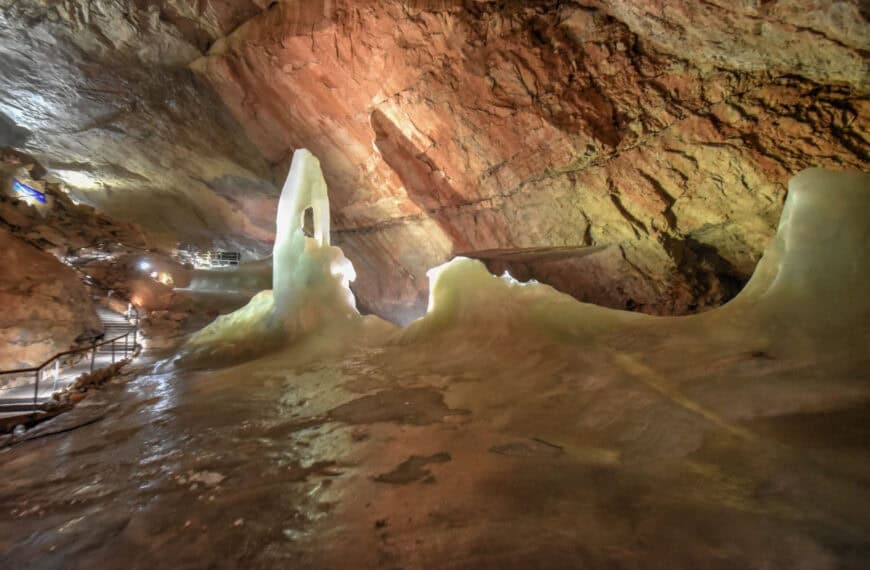One of Austria’s most impressive castles is a short drive south of Salzburg. Although Mozart’s town is home to its own well-known castle, Hohenwerfen Castle has a unique setting, set high up on a rocky hill surrounded by towering mountains on all sides. We found it to be an absolutely stunning castle to visit, which can easily be done as a day trip from Salzburg or the Salzkammergut region, and it can also easily be combined with a visit to the nearby Werfen ice cave. To help you plan the perfect visit, we put together this travel guide on Austria’s Must-See Hohenwerfen Castle.
Disclosure: This page (Austria’s Must-See Hohenwerfen Castle) may contain product affiliate links. At no additional cost to you, we may receive a commission for purchases made through these links. More details can be found on our disclosure and policies page.
You might also be interested in these pages:
Best Things to See and Do in the Salzkammergut
Perfect Road Trip Itinerary in the Salzkammergut
Best Things to See and Do in Salzburg
Best Things to See and Do in Hallstatt





Orientation – Hohenwerfen Castle Location
Hohenwerfen Castle is located in Central Austria near the town of Werfen, which is south of Salzburg and near the German border. It can easily be visited as a day trip from Salzburg or the nearby German region of Berchtesgaden.

Regardless of where you are visiting from, it will generally not only be quicker and more straightforward by car, but you will also enjoy greater flexibility and ease of travel if you wish to visit other nearby attractions.
By Car: From Salzburg, it’s about a 35-minute drive (42 km) to Hohenwerfen Castle. From Hallstatt, it’s about a 1h drive (60km). From Munich, it’s about a 2h drive (170km), and from Innsbruck, it’s about a 2h30 drive (220km).
If you need to book a rental vehicle for your travels, we highly recommend using Discover Cars to get the best rates on your rental in Austria or Germany.
We also highly recommend Airalo (eSIM card) for your connectivity needs when travelling abroad. Airalo is the world’s first and largest eSIM store with eSIM plans for 200+ countries and regions worldwide.
Important: All Austrian motorways (“Autobahn”) and expressways (“S” roads) are subject to tolls. All cars, motorbikes and camper vans must either properly display a toll sticker or have purchased online a digital vignette when they plan to drive onto a motorway or expressway. Vignettes with periods of validity of 10 days, 2 months or 1 year are available from more than 6,000 outlets in Austria and neighbouring countries, and digital vignettes can be purchased from the ASFINAG website. They are not prohibitively expensive — for instance, the 10-day vignette for cars costs €11.50.
By Bus/Train: From Salzburg, there are several train options you can take, most of which will take 1h15-1h30 to reach the town of Werfen. Check the OBB website for timetables and tickets. From Munich or Innsbruck, you’re looking at a journey of nearly 4 hours by public transit. The Werfen train station is a 30-minute walk along a shaded footpath from the castle.
Arrival by Car and Parking:
There’s a large car park near the base of the hill on which the castle is built. The castle is located a 10-to-15-minute uphill walk from the car park, along a well-manicured trail through a small forest. Alternatively, there is a short funicular (lift) you can take from the car park up to the castle (adds €4 to your entrance ticket cost).
About Hohenwerfen – A Brief History of the Castle
Castle Hohenwerfen is built atop a 155-metre (509 ft) high rock, near the town of Werfen. It is surrounded by the Berchtesgaden Alps to the west and the Tennen Mountains to the east. Hohenwerfen is generally considered a “sister castle” of Salzburg’s Hohensalzburg Castle as both castles were built in the 11th century by the Archbishops of Salzburg.
The first fortifications (probably simple wooden structures) were built between 1075 and 1078 at the behest of the Archbishop, along with Hohensalzburg (Salzburg) and Petersberg (Friesach) Castles to secure the route across the Eastern Alps along the Salzach River against the forces of King Henry IV of Germany. Despite the Archbishop’s efforts, King Henry had him expelled from Salzburg and the archbishop eventually passed away at Hohenwerfen in 1088.
In the following centuries, Hohenwerfen served Salzburg’s rulers, the prince-archbishops, not only as a military base but also as a residence and hunting retreat. The fortress was extended in the 12th century and to a lesser extent again in the 16th century following the German Peasants’ War, when rioting farmers and peasants besieged and destroyed large sections of the castle. Following its restoration, the castle started to resemble more closely what it looks like today.
In the 17th and 18th century, the castle was mainly used as a prison. In the early 19th century the castle changed over to Bavarian rule and was allowed to fall into disrepair and ruin. Fortunately, shortly thereafter the emperor’s brother, Archduke Johann, had the medieval castle repaired and restored for romantic and nostalgic reasons. The castle was then mostly used as a hunting base. In 1898 Archduke Eugen purchased the castle and expanded the complex into a stately home and added a large collection of art and weaponry.
In World War II, the castle served as a Gauführerschule, a nazi education camp and after the war it was used as a training center for Salzburg’s police school until 1987. Only since 1987 has the fortress been used as a tourist attraction.
Planning Your Visit
Schedule and Opening Hours
Hohenwerfen Castle can be visited between late March and early November.
2024 Castle Opening Hours (access to Castle grounds and inner courtyard):
29 March – 30 April*: Tue – Sun, 9.30 a.m. – 4.00 p.m.
May – September: daily, 9.00 a.m. – 5.00 p.m.
15 July – 16 August: daily, 9.00 a.m. – 6.00 p.m.
October – 3 November*: Tue – Sun, 9.30 a.m. – 4.00 p.m.
* Closed Mondays (except holidays)
2024 Castle Tours schedule* (required to see the castle interior)
March, April, October & November: 10.00 a.m. – 04.00 p.m.
May – September: 10.00 a.m. – 05.00 p.m.
15 July – 16 August: 10.00 a.m. – 6.00 p.m.
*Tours take place continuously according to availability and last approximately 50 minutes.
Falconry demonstrations with birds of prey (approximately 25 minutes)
March to 14 July: 11.15 a.m. and 3.15 p.m.
15 July to 16 August: 11.15 a.m., 2.15 and 4.30 p.m.
17 August to 3 November: 11.15 a.m. and 3.15 p.m.
Entry Ticket Options and Costs
There are 4 ticket options for visiting Hohenwerfen Castle (2024 prices*):
1. Regular ticket (provides access to Castle grounds and inner courtyard) – € 11,40
2. Regular ticket with a guided tour (the only way to see the inside of the castle) – € 15,40
3. Regular ticket with lift via the funicular (lift)– € 13,90
4. Regular ticket with lift via the funicular (lift) and with a guided tour – € 17,90
*Reduced fares available for children
It is highly recommended to buy tickets online in advance, as any remaining tickets sold on-site are subject to availability. Tickets can be purchased on the castle website here.
If you plan on taking part in a guided tour, you will be asked to select a date and a time slot for your tour when booking online. Otherwise, you will only need to select the date you intend to visit the castle. But if you have time for the tour, we highly recommend it – it was very interesting and entertaining, and it’s only a few euros extra compared to the regular entrance ticket.
Other Important Castle Visit Information
– Note that Hohenwerfen Castle has many steps and slopes, making accessibility difficult. The castle tour of the interior and access to the birds of prey demonstration cannot be offered to disabled people due to the many stairs. At the ticket office, you can receive free tablets with a video tour of the interior and the falconry demonstration.
– Partner dogs are allowed on a leash at the Hohenwerfen Castle.
– Drone flights are forbidden.
– Wear proper footwear. There are lots of steps and steep ascents both in the castle and along the path to reach it.
– Try to visit during a good weather day. Half the fun is being outside the castle and enjoying the stunning mountain scenery around it.
– You should plan for at least two hours at the castle, ideally a bit longer if you would like to see the falconry show.
Visiting the Castle & Guided Tour
The Guided Tour
During the tour, you’ll get to hear from a knowledgeable guide great stories about the castle’s rich history. In particular, you’ll learn about the history behind the bell tower and how it was built, several of the living and residential quarters, the castle vault and various passageways, and the castle chapel. You will also visit the armory (where you can see swords, spears, and other weapons used by knights and soldiers throughout the castle’s history) and learn about the weapons used by the fortress such as canons that were added to the defence arsenal in the 17th century.








One area that was particularly fascinating to learn about was the dungeon tower. A four-meter thick wall surrounds the fortress dungeon. A blacksmith from Hüttau is said to have spent seven years as a prisoner in this chamber, which is almost 9 meters deep. And right next to the dungeon was the… torture chamber! This is where you will see various contraptions and devices used to torment prisoners over the centuries.



Another highlight of the tour was the amazing views that are to be had of the inner courtyard and the surrounding mountain scenery from the bell tower and the castle ramparts.



Wandering Around the Castle
The scenery and the gardens around the castle are quite beautiful. Be sure to take to time to enjoy a leisurely stroll around the castle grounds, either before or after the group tour.





.
The Inner Courtyard
The castle’s courtyard is often filled with actors playing the role of various professions from back in the castle’s heyday, such as woodworkers, musicians and metal forgers.



The inner courtyard is also where you will find the castle snack bar where you can grab a quick bite to eat.
The Falconery Center
This is where you will get to witness professional falconers demonstrate the impressive practice of hunting with trained birds of prey. The long-established regional falconry center at Hohenwerfen Castle consists of the falconry museum, a historical falcon room and an open ground on the Linden meadow where demonstrations take place two-to-three times per day. The professional falconers who work at Hohenwerfen have passed the hunters and falconers’ license exam, and some also have forestry or veterinary training. The falconers’ flats are in the Lindenhaus, in the middle of the falconry center, in order to guarantee the best possible care for the birds.
Our photographs don’t do the falconry show justice, so here’s the castle’s official video:
Finally, although we didn’t get to try it, there is also a restaurant located within the castle, the Burgschenke Hohenwerfen, where you can enjoy The Knight’s Banquet, which includes a 7-course menu with medieval music and a 3-hour program. Although the banquet is typically reserved for large groups, you often can join in on already planned evenings.
When to Visit Hohenwerfen Castle
Weekdays are generally less busy than weekends, and there are fewer crowds early and late in the day. We generally prefer to travel during the shoulder season (early June, September and early October) when there are fewer other tourists around but the weather is still pleasant. Try to visit during a good weather day, as half the fun is being outside the castle and enjoying the stunning mountain scenery around it.
Hohenwerfen Castle in Movies and Popular Culture
– In the 1968 film Where Eagles Dare (featuring Clint Eastwood) the castle is featured as the fictional Schloß Adler that is raided by an S.O.E. paratroop team during World War II
– In the Amazon Video original series The Man in the High Castle (2015) the castle was used as the Führer’s headquarters.
– The castle can be seen in the background of the “Do-Re-Mi” picnic scene in The Sound of Music starring Julie Andrews, which was filmed on a hillside showing the village of Werfen.
– In the video game Call of Duty: Black Ops III, the zombie map “Der Eisendrache” is based on Hohenwerfen Castle.
Other Sights and Attractions near Hohenwerfen Castle
Werfen Ice Caves
Just a short distance from the castle in Werfen is Eisriesenwelt, the largest ice cave in the world. It extends for more than 42 km. The cave is open to visitors from early May until the end of October, and a visit to the cave can easily be made on the same day as Hohenwerfen Castle. The car park is about 5 km from the castle, but from there you will have to walk 20 minutes along a trail to reach a cable car station. After a 3-minute ride up, you will have to walk another 20 minutes to reach the cave entrance, from where you will begin your 70-minute guided tour. For more information and advanced booking, you can consult the cave’s official webpage.
Since photography isn’t permitted inside the Werfen Ice Cave, here are some images from the Dachstein Giant Ice Cave near Hallstatt.





For more information on this ice cave, check our Travel Guide on visiting the Dachstein Giant Ice Cave.
Visit the Sound of Music Picnic Spot
A short hike or an even shorter drive from the town of Werfen will take you to the iconic spot of the picnic scene in the Sound of Music where Hohenwerfen Castle appears in the background.
Visit Salzburg
Given Salzburg’s proximity to the Salzkammergut, it makes definite sense to visit this historic baroque town during your stay in the region. While many visit the Salzkammergut as day trips from Salzburg, many others do the opposite and visit Salzburg as a day trip from their base in the Salzkammergut.
Tucked away between scenic alpine landscapes near the German border and UNESCO-listed since 1997, the city has what many think is the best-preserved Baroque Altstadt (old town) and one of Europe’s best-preserved medieval castles towering above it. From the Sound of Music to Mozart’s childhood, the city has a rich cultural history and plenty of stories to share. Although the historic old town is fairly compact, its packed with attractions, museums and things to do. You can easily spend a full day here, if not more. The castle alone is worth a few hours.






For more information and tips on visiting this beautiful city, check out our travel guide on the Best Things to See and Do in Salzburg.
Visit Hallstatt
The picture-perfect postcard village of Hallstatt is only a 7km drive away. Although it can get overcrowded at times, it remains nonetheless a must-visit destination in our opinion. Fortunately, early mornings and evenings can be quieter making it more likely that you will enjoy a fun stroll through this historic small town. And even if it does get too crowded, there are activities where you can somewhat escape the crowds, such as visiting the world’s oldest salt mine and spending some time on Hallstatt’s impressive Skydeck. You can also easily combine Hallstatt (early morning) with a visit to Dachstein (late morning and afternoon) within the same day.





For more information and tips on visiting Hallstatt, check out our travel guide on the Best Things to See and Do in Hallstatt.
Take a boat trip on Königssee and hike to Obersee
Königssee is often considered Germany’s most beautiful alpine lake. Located in nearby eastern Bavaria just across the border, it is definitely reminiscent of a Norwegian fjord due to its elongated shape and being nestled between towering mountains. A fun hour-long ride on electric-powered boats will take you across the lake to its southern point, from which you can undertake a relatively easy hike around the scenic Obersee (a beautiful small lake south of Königssee), through cattle pastures and eventually to Germany’s tallest waterfall, Röthbachwasserfall. If that wasn’t enough, you can also visit a stunning old pilgrimage church from the late 17th century, St Bartholomew, which can only be visited by boat (or via a very long hike) along the lake’s scenic western shore.





For more information and tips on visiting this area of Berchtesgaden National Park, check out our travel guide on Hiking to Obersee with a Königssee boat Tour.
Visit the Berchtesgaden Salt Mine (Salzbergwerk Berchtesgaden)
This was such a fun activity and is only a short 10-minute drive from Königssee. Unfortunately, like in the Werfen Ice Cave (Eisriesenwelt), pictures are forbidden within the salt mines, so we don’t have much to offer in terms of visuals. We nonetheless found the tour to be a fun learning experience about the history of salt mining in the area – not to mention the underground mining train rides, the boat ride across “Mirror Lake”, a subterranean salt lake, and the 36-meter-long miner’s wooden slide.
Berchtesgaden Salt Mine started operations in 1517 – and has continued uninterrupted to this day. A miner’s train will take you 650 meters (2,133 feet) into the mountain itself, where a gigantic salt cathedral with a spectacular miner’s slide awaits. Various multimedia installations depicting the mining of salt are presented throughout the one-hour guided tour.
The salt mine is located within the town of Berchtesgaden, about a 10-minute drive from Königssee. For more information, you can visit the mine’s official website. Advanced booking is recommended as the tours can sell out quickly.
Visit Eagle’s Nest
Also near Berchtesgaden in Germany, the Eagle’s Nest was built as a diplomatic teahouse for Adolf Hitler on Kehlstein Mountain. Its unusual location built up above Berchtesgaden at an elevation of 1,834 meters above sea level made it quite the engineering feat at the time. Built in 1937-38, the teahouse was intended to serve as a place of political representation, away from public view, and leave guests amazed. Since 1952, the building has been used as a mountain guesthouse and has become a popular excursion destination.
Today the Eagle’s Nest houses a restaurant, an exhibit on the history about the History of the Eagle’s Nest, and a large terrace offering stunning panoramic views. In clear weather the views of the Bavarian and Austrian Alps are spectacular.
You actually can’t drive up to the Eagle’s Nest – it can only be reached by special bus that will drive up a steep mountain road, after which you will have to traverse a passageway that leads through a tunnel to an elevator which then carries guests up about 124 meters directly into the teahouse. For more information on visiting the Eagle’s Nest, you can consult its official website.
Planning a Trip to Austria?
You might be interested in these pages (coming soon):
Best Things to See and Do in the Salzkammergut
Perfect Road Trip Itinerary in the Salzkammergut
Best Things to See and Do in Salzburg
Best Things to See and Do in Hallstatt
We also highly recommend these guidebooks:
Rick Steves Vienna, Salzburg & Tirol
Lonely Planet Austria
Photography Gear
If you like our photography, you might be interested in some of the gear we use to shoot our travel and hiking destinations.
Camera Body – Nikon Z 6ii Fx-series Mirrorless Body
Main Lens – NIKON 24-120mm F/4G ED VR AF-S
Zoom Lens – Sigma 745-306 150-600mm f/5-6.3
Polarizing filters – Urth Circular Polarizing (CPL)
Camera Tripod – K&F Concept 64-inch Camera Tripod
Mini-tripod – Lammcou Flexible Camera Tripod
Camera/hiking backpack – Vanguard Alta Rise 48 Backpack
Universal Travel Adapter – VYLEE Universal International Power Travel Plug
Other Travel Essentials
Travel Insurance
SafetyWing is a travel insurance company that offers comprehensive coverage for travellers. Includes Medical Insurance and Travel Insurance. Primarily geared towards long-term travellers, digital nomads, and expats.
e-Sim cards
Airalo is the world’s first and largest eSIM store with eSIM plans for 200+ countries and regions worldwide. With Airalo eSIMs, travellers can get connected the moment they land at their destination and avoid nasty data roaming charges
eSIMS are a sustainable alternative to single-use SIM cards – they are 100% digital, require less energy to produce and be re-used rather than disposed of.
Car Rentals
Discover Cars is our go-to website for car rentals. We almost always find our preferred rate there.
Transfer from Airport
Welcome Pickups is our favourite private transfer service, which you can pre-book at a fixed price. Currently available in 220 cities all over the world (mostly in Europe, but with several major cities in Asia, the Middle East and the US).
Kiwitaxi is another private transfer service – we haven’t tried it yet, but it’s currently available in a few more countries (102 as of 2024).
Hotels and Accommodations (coming soon)
Photography Prints
If you found this blog useful, you can help support our blog by purchasing low-cost digital prints. Printed physical prints are also available for purchase.








—–
Well, that wraps it up! We hope you enjoyed our Guide to Austria’s Must-See Hohenwerfen Castle and that it will prove useful for planning your trip.
—–
You might also be interested in these related pages:
